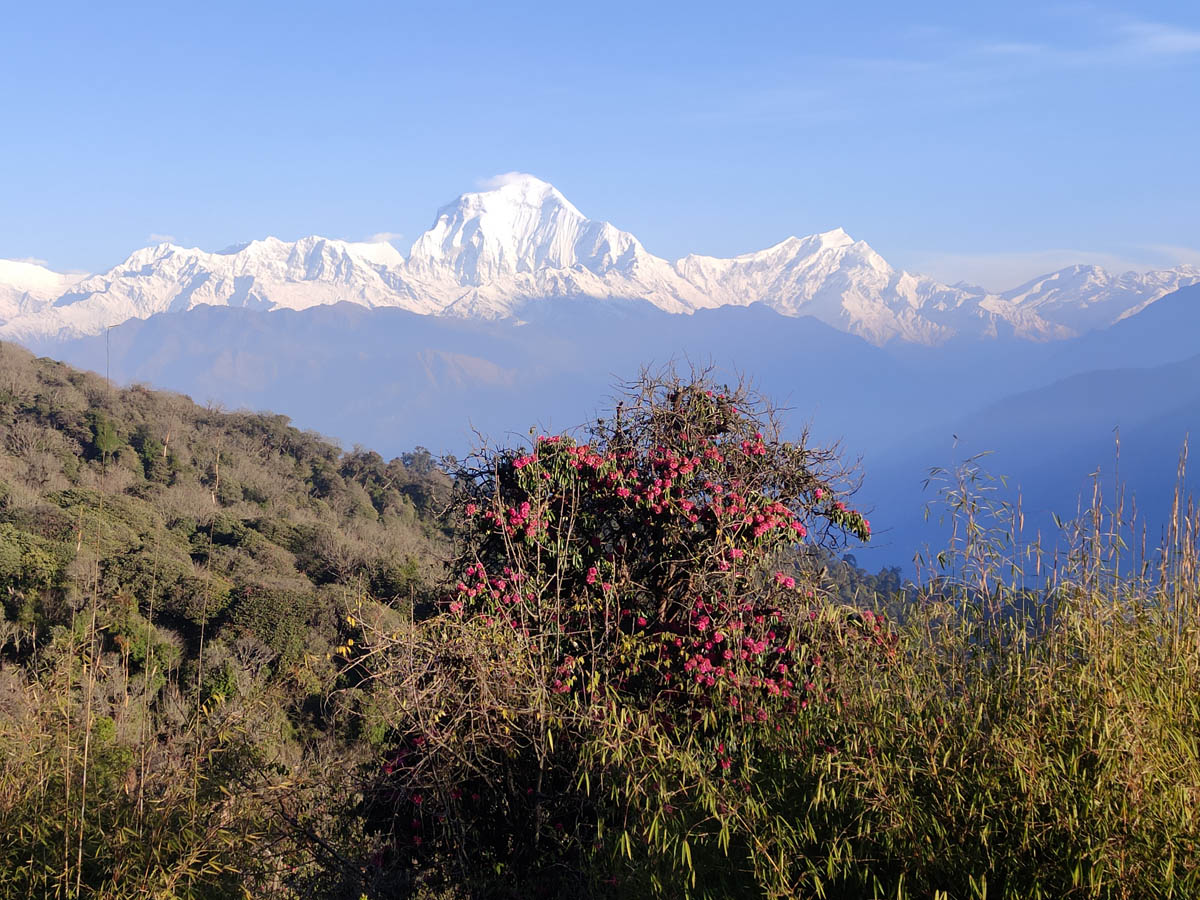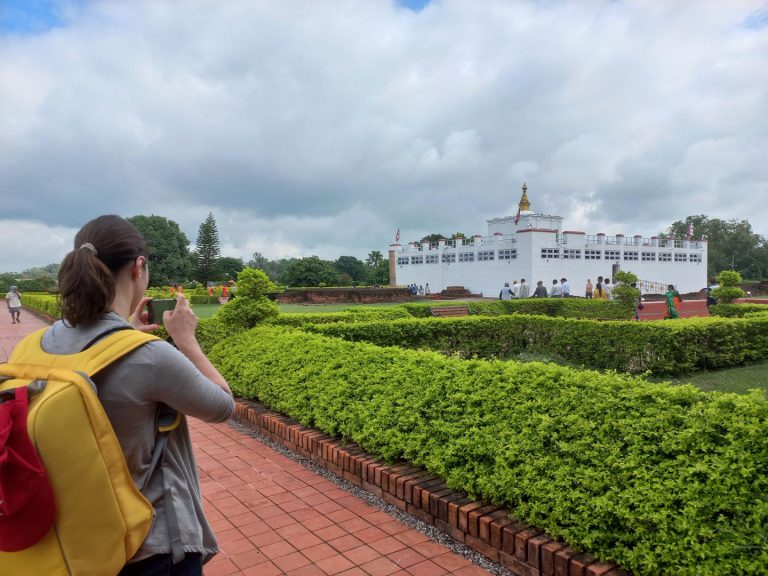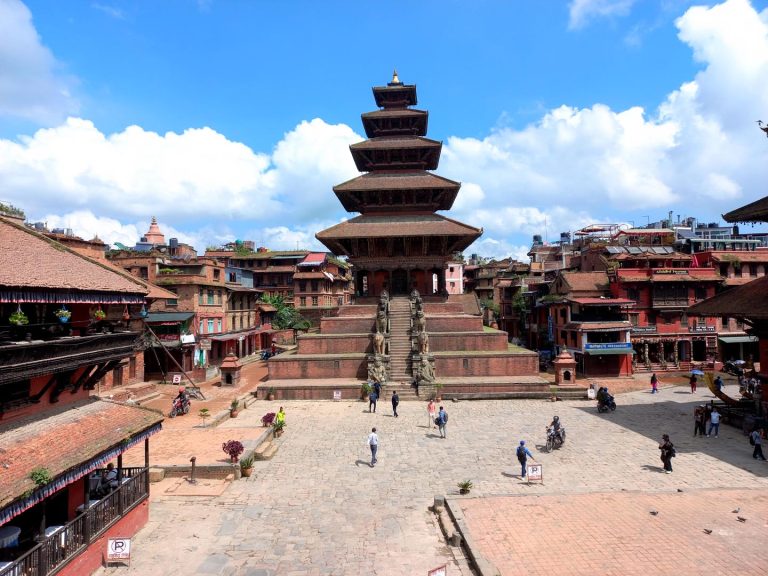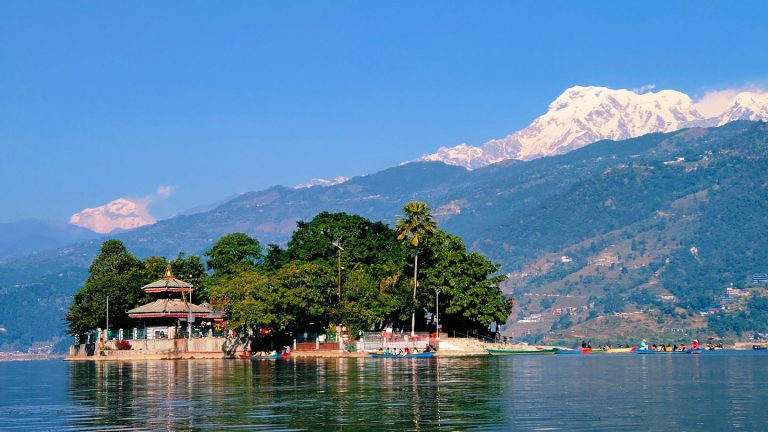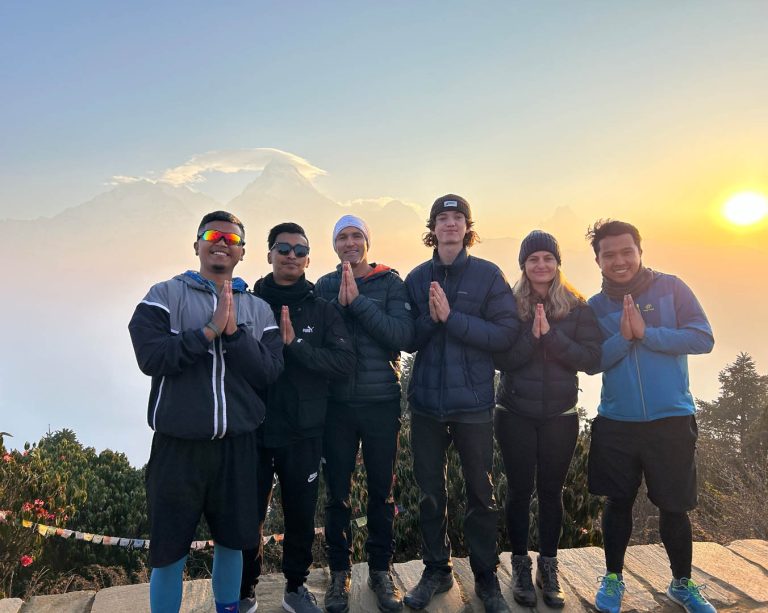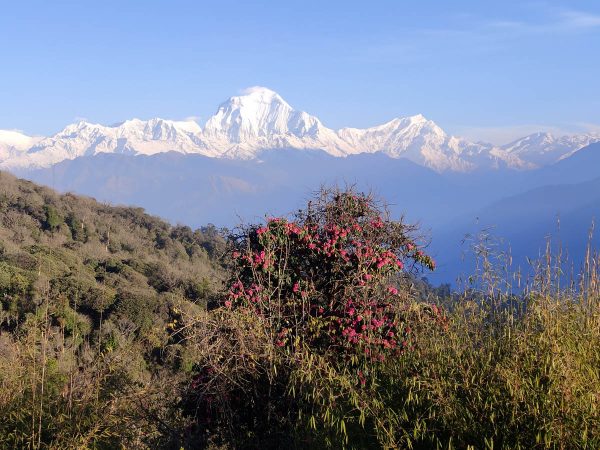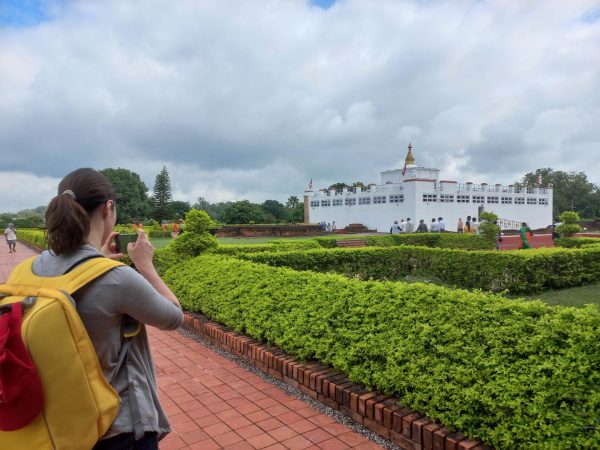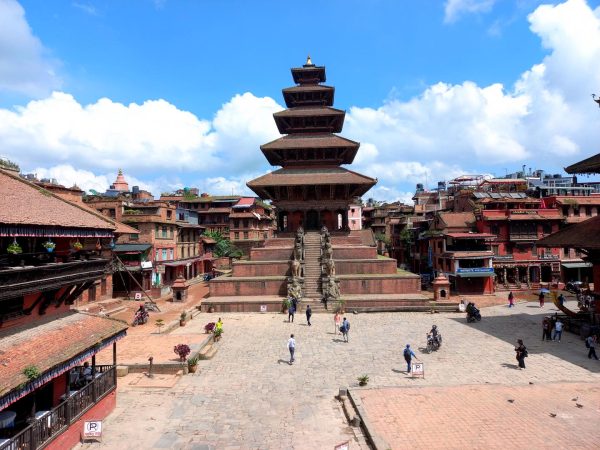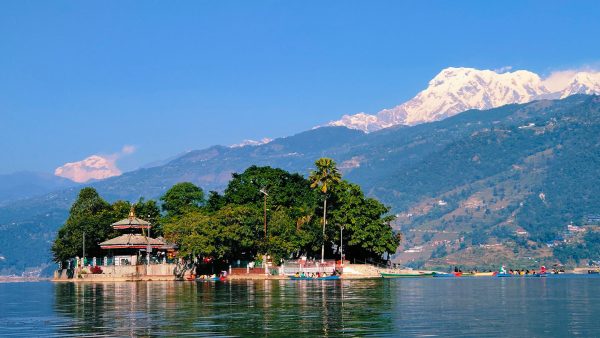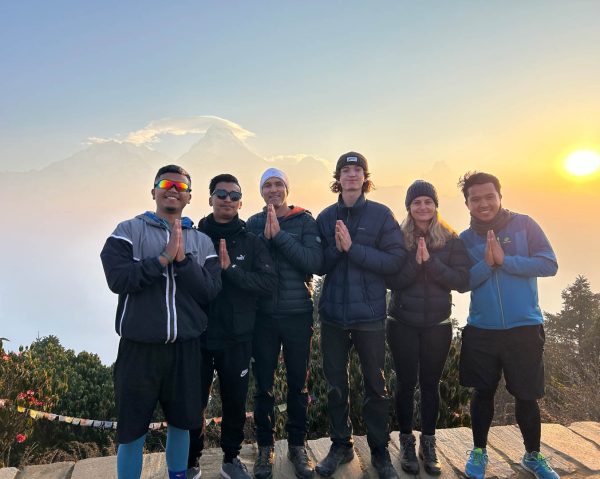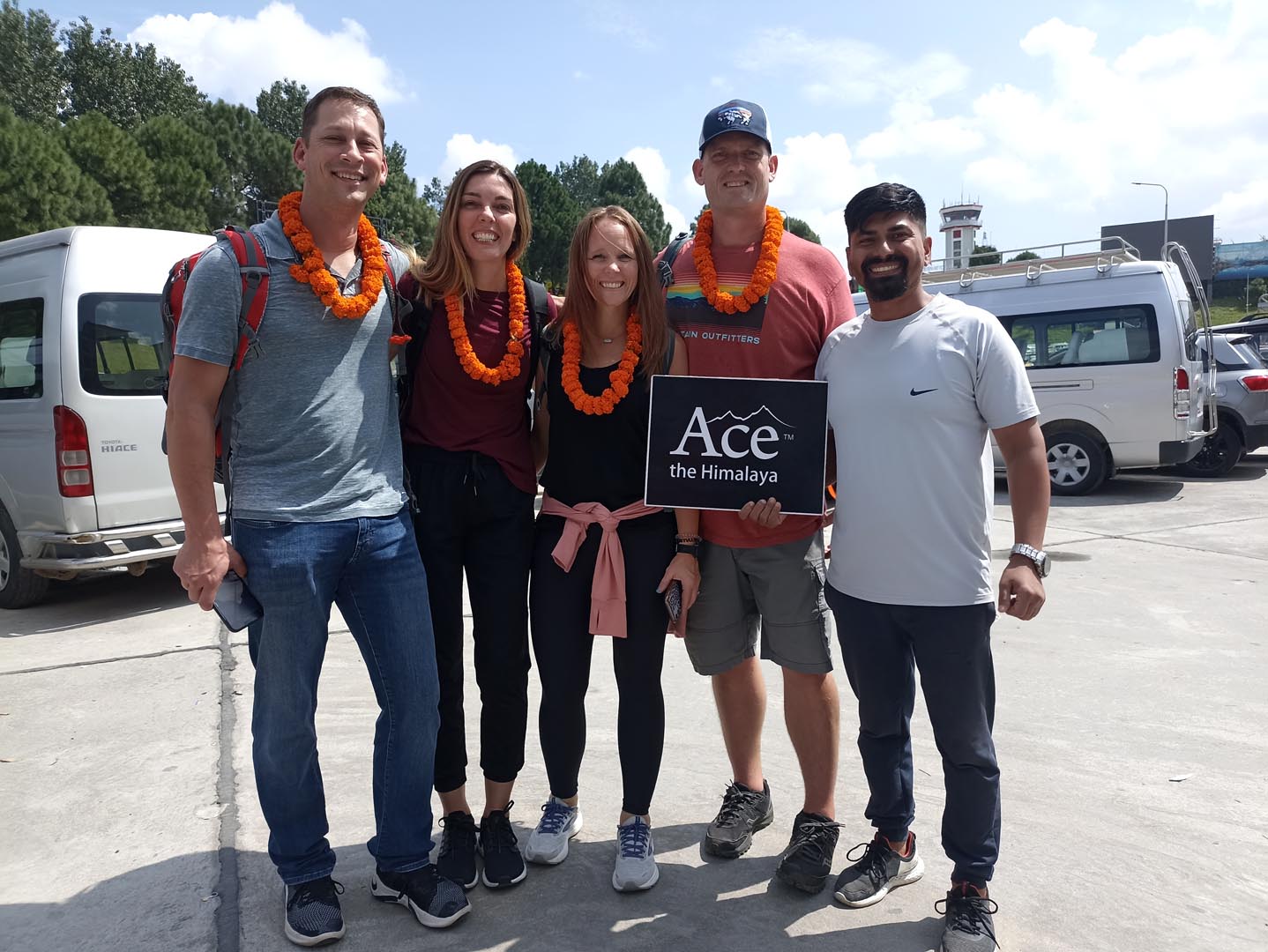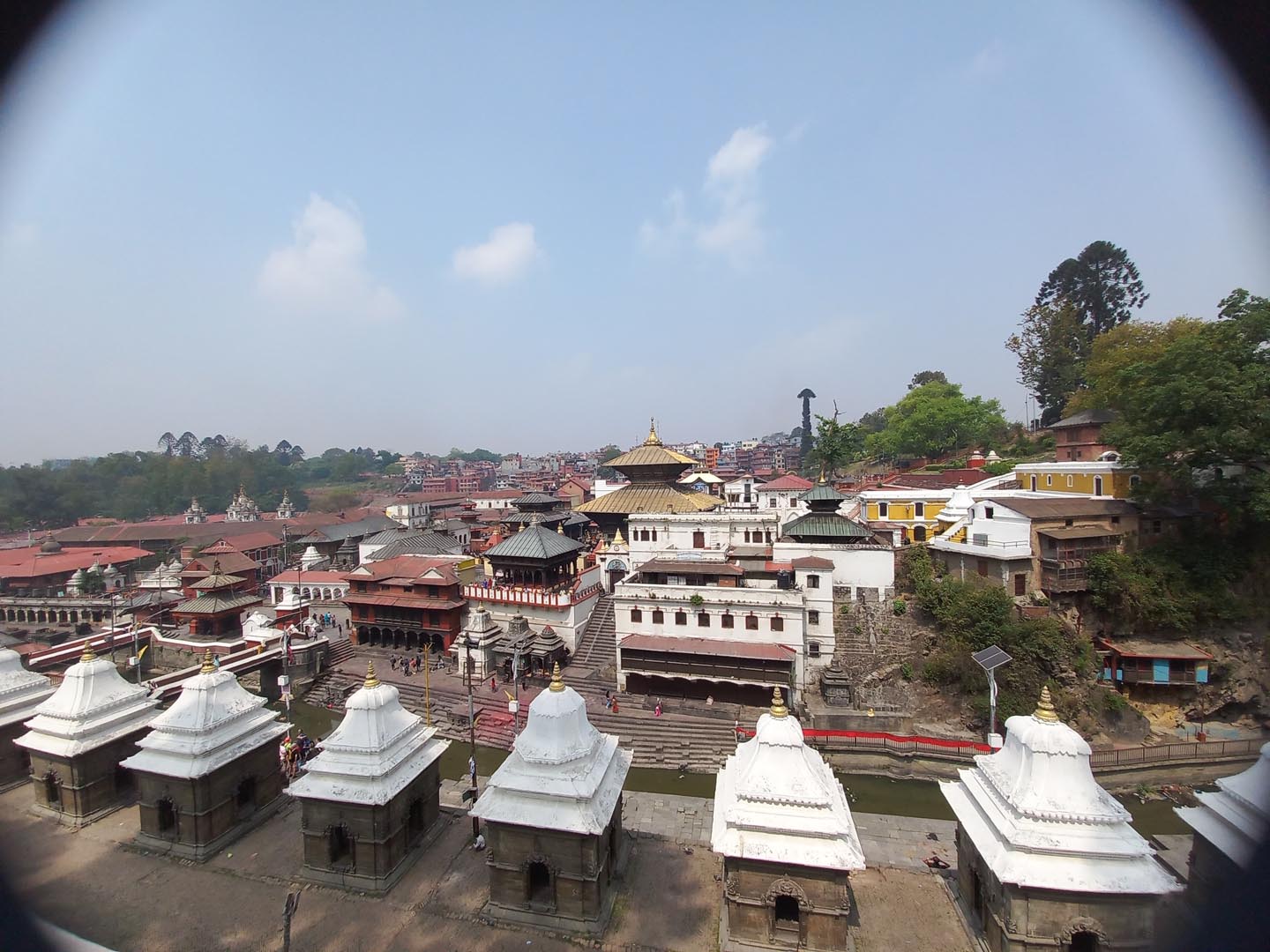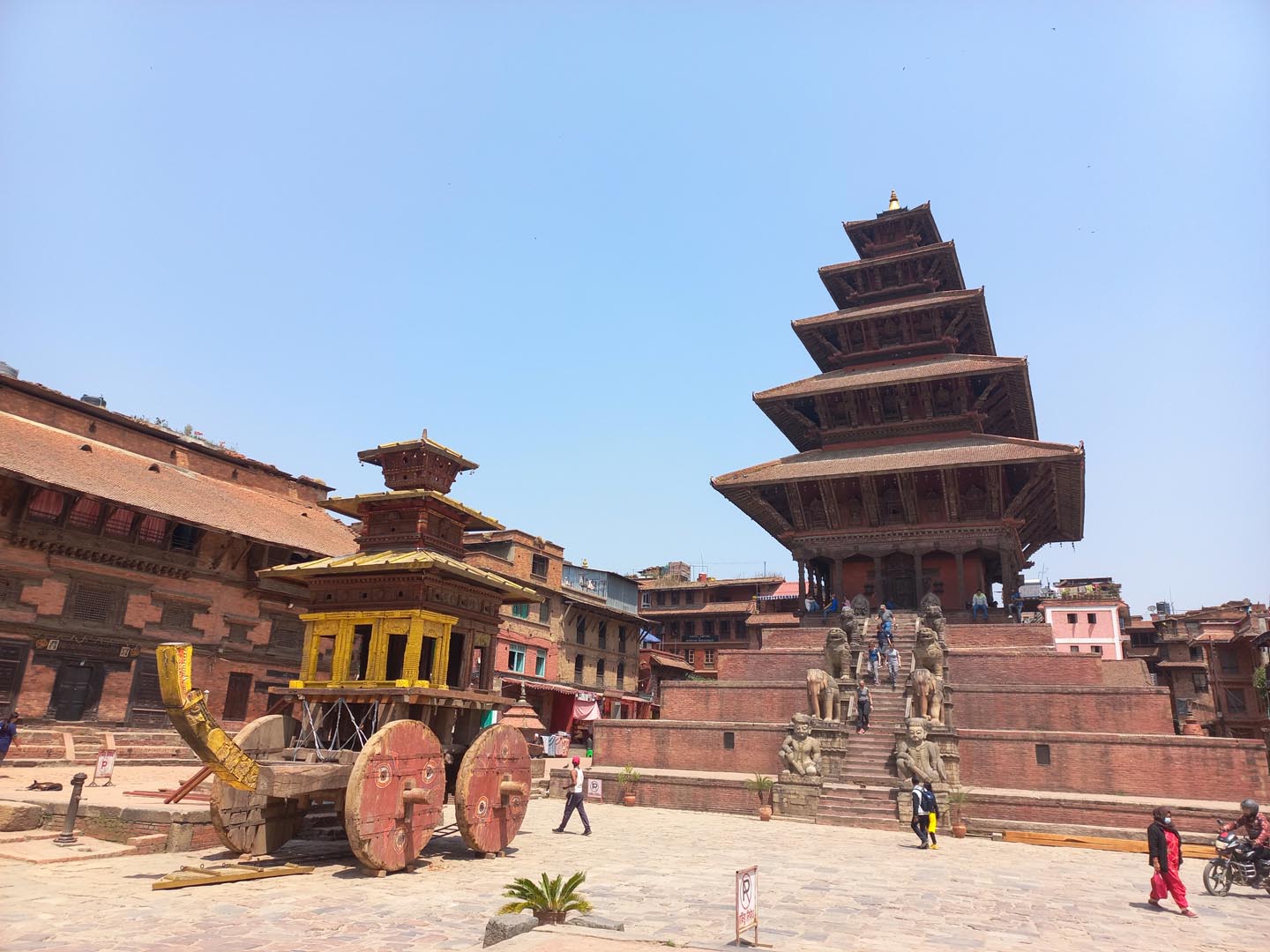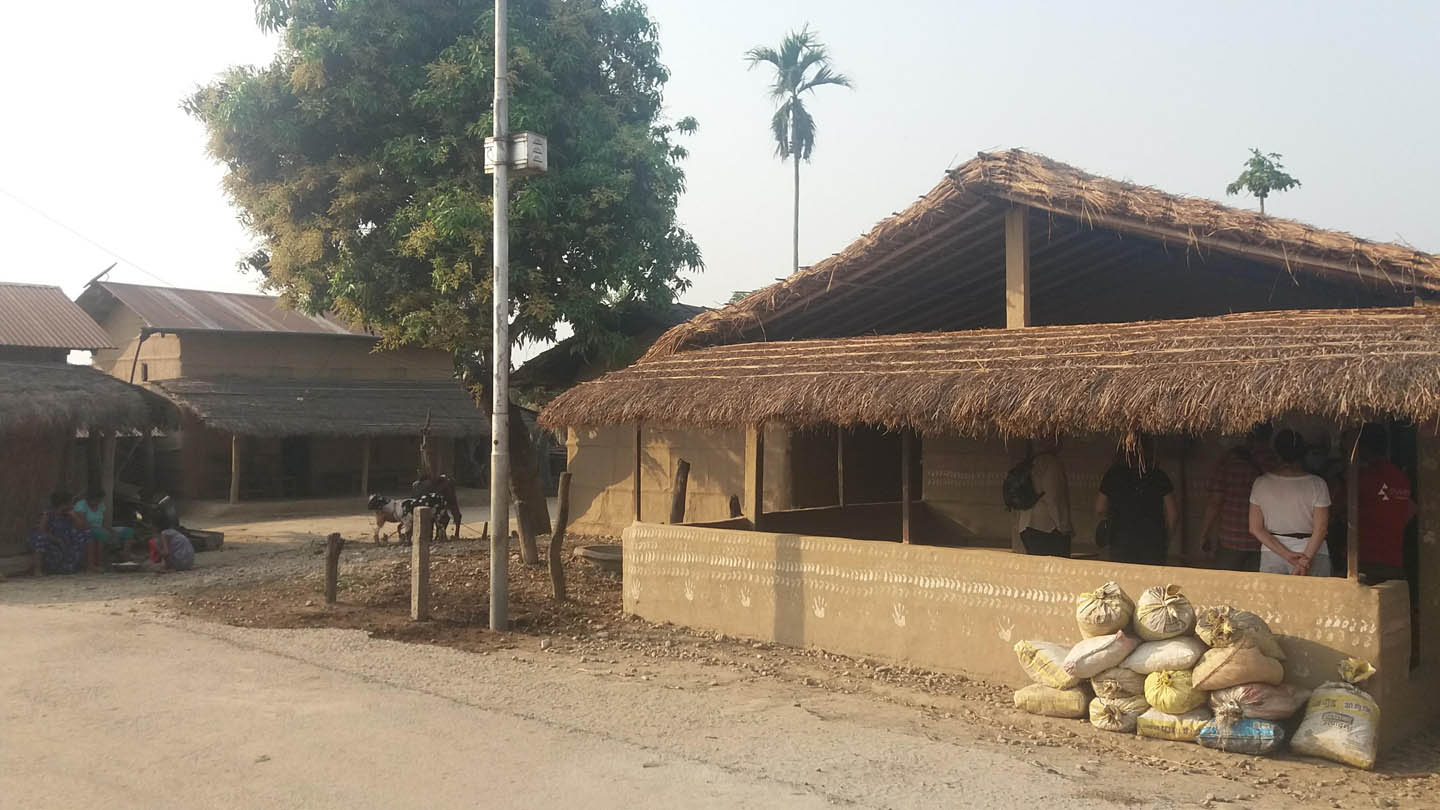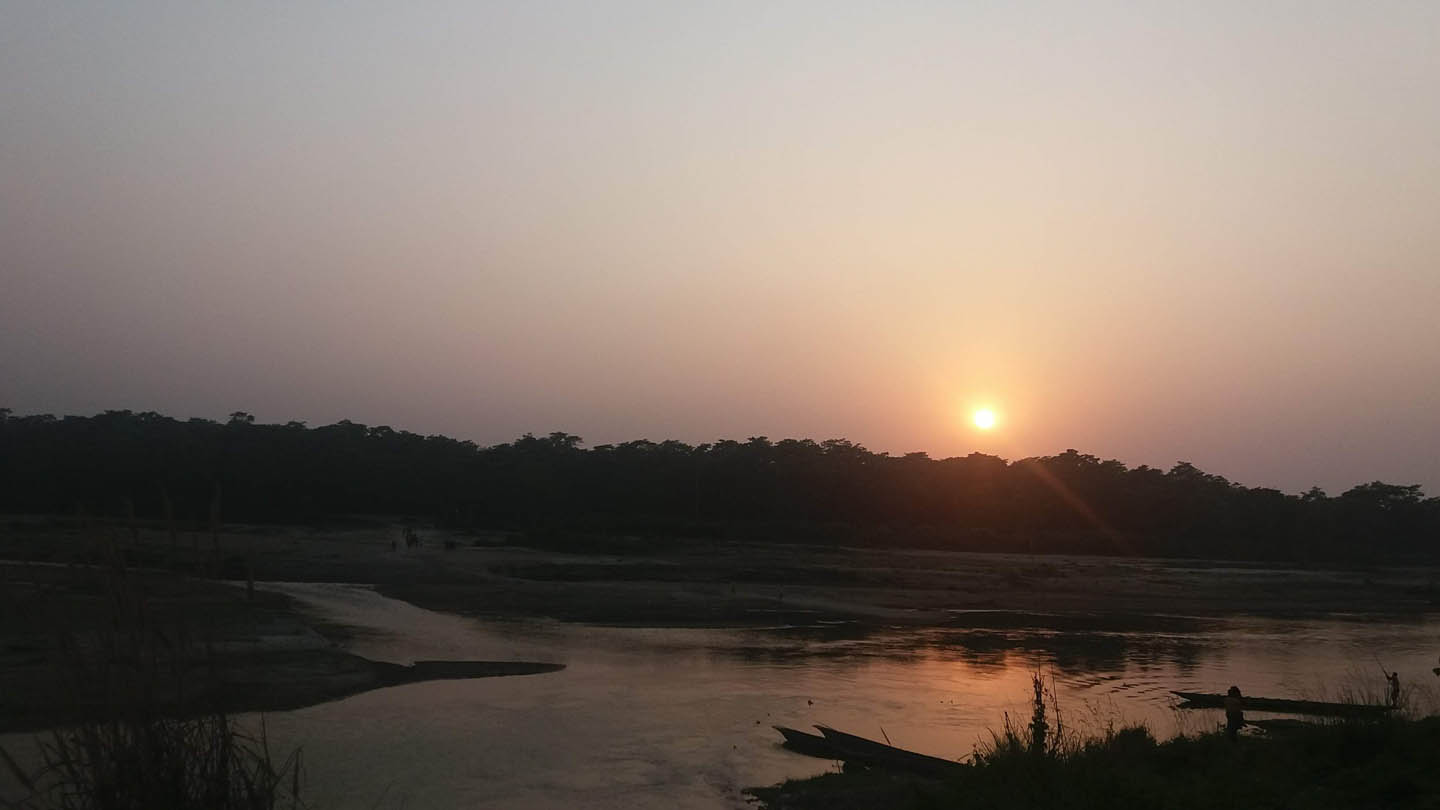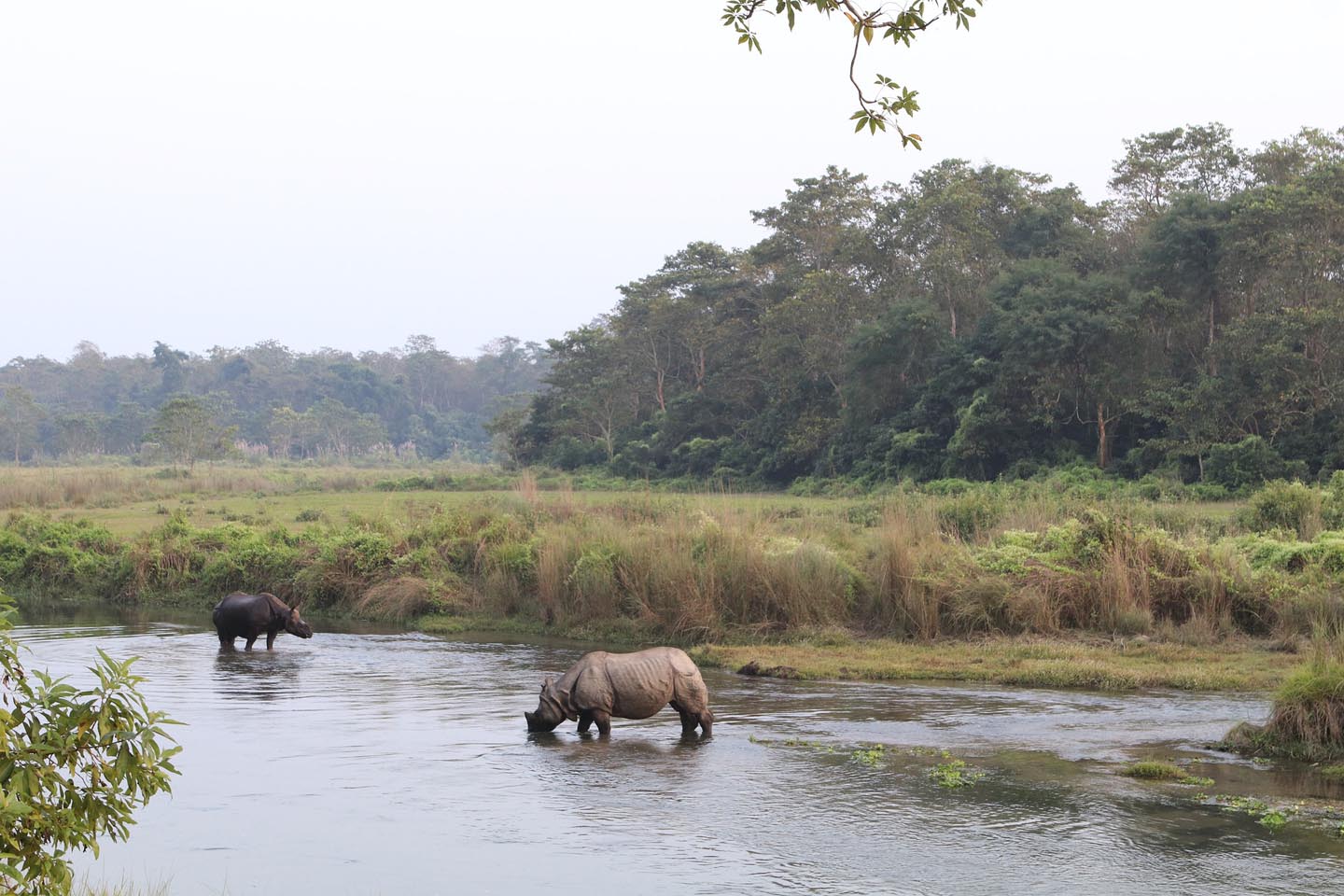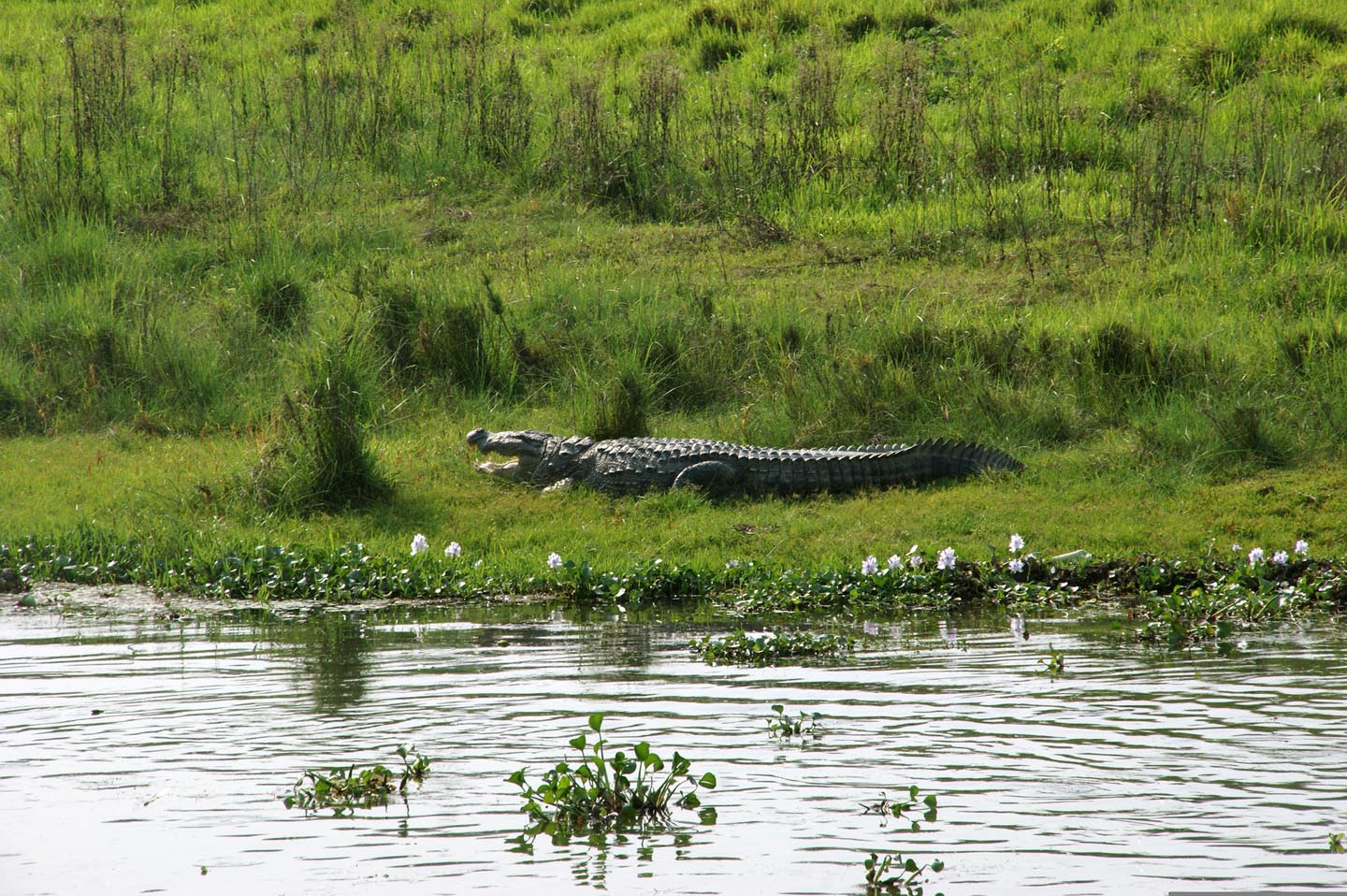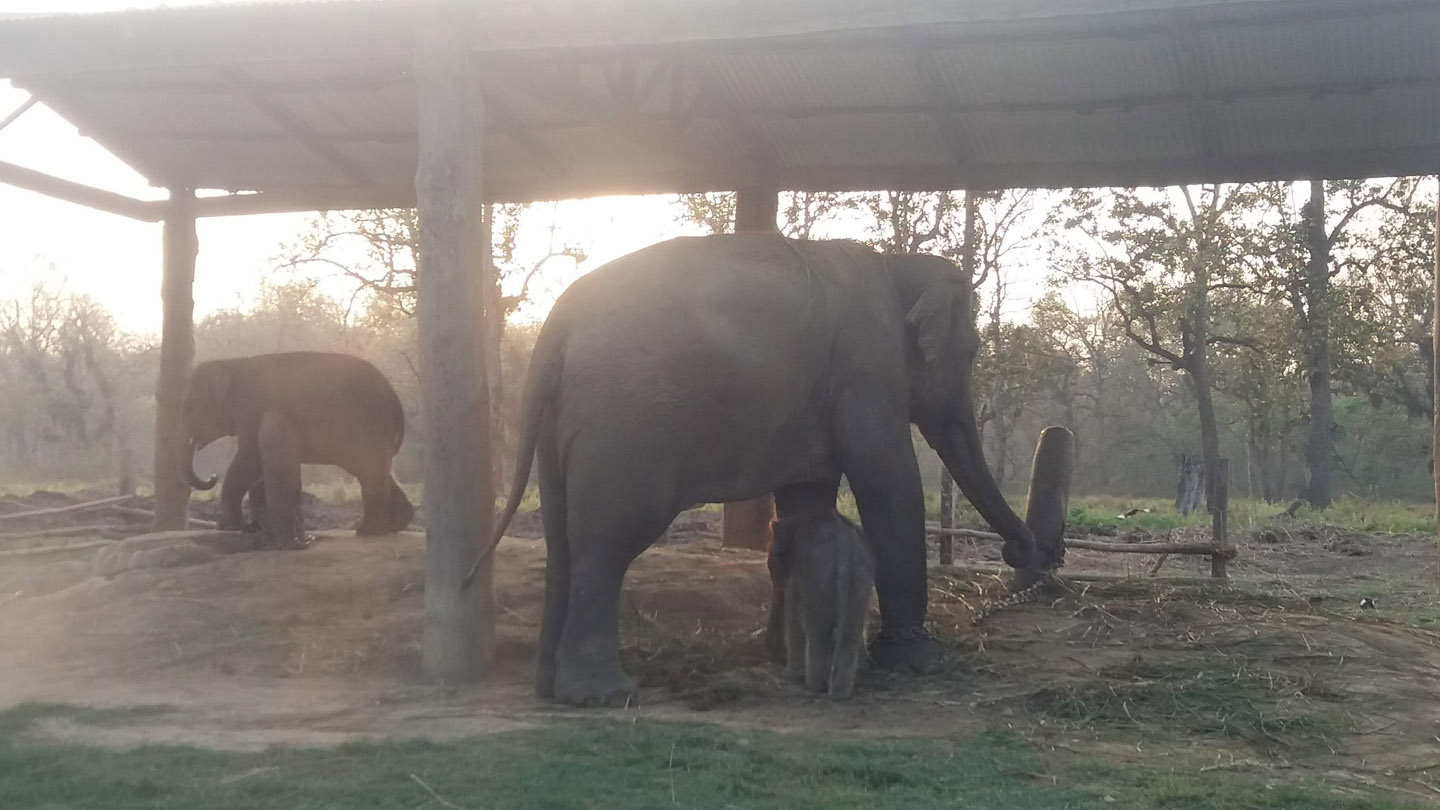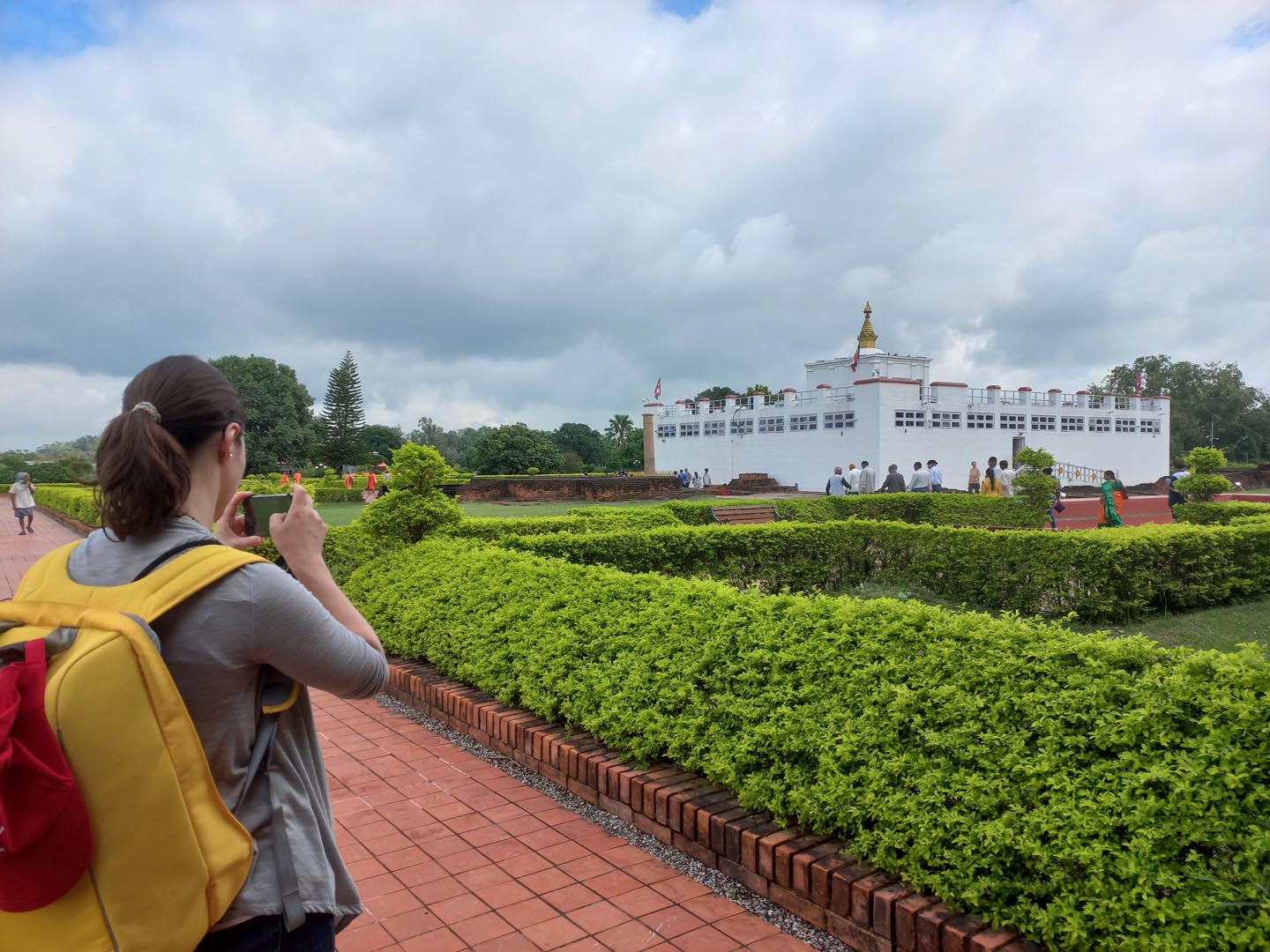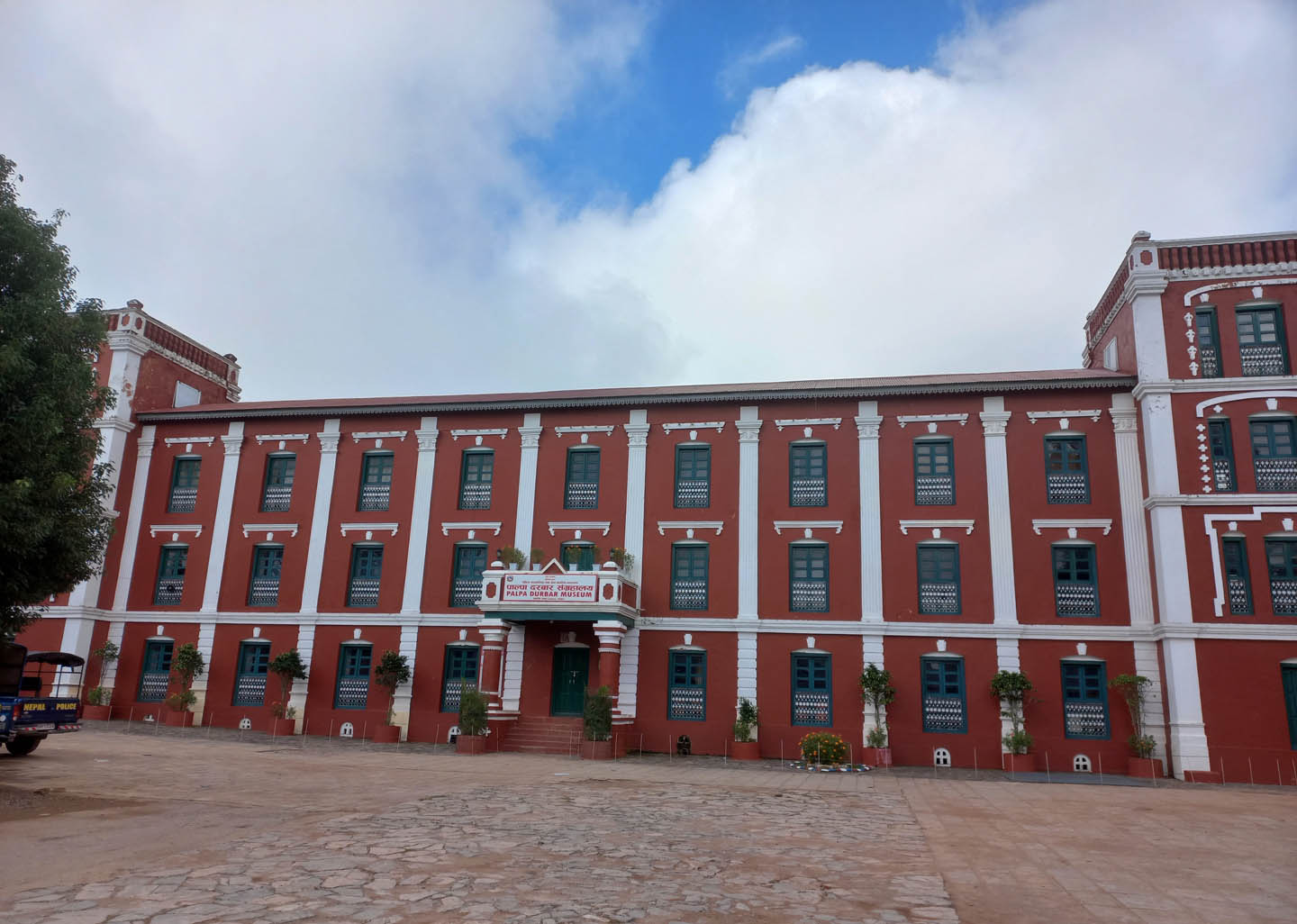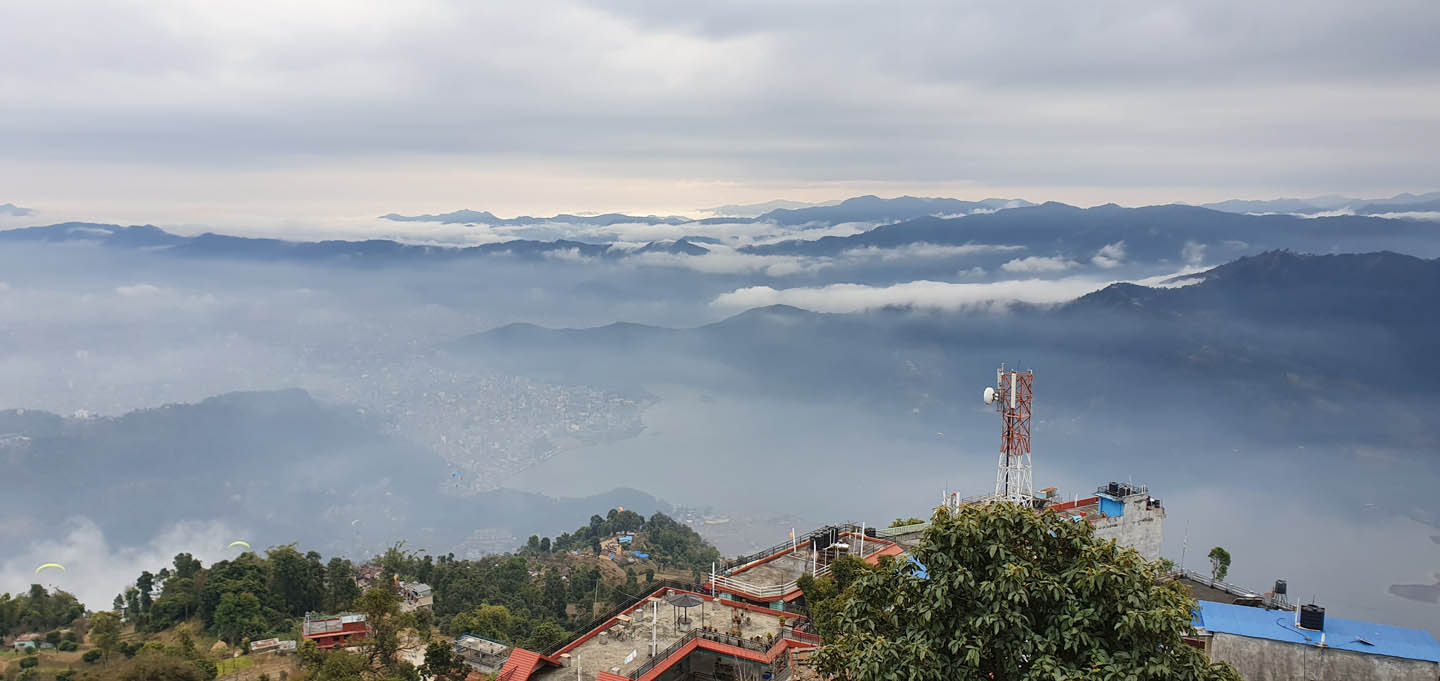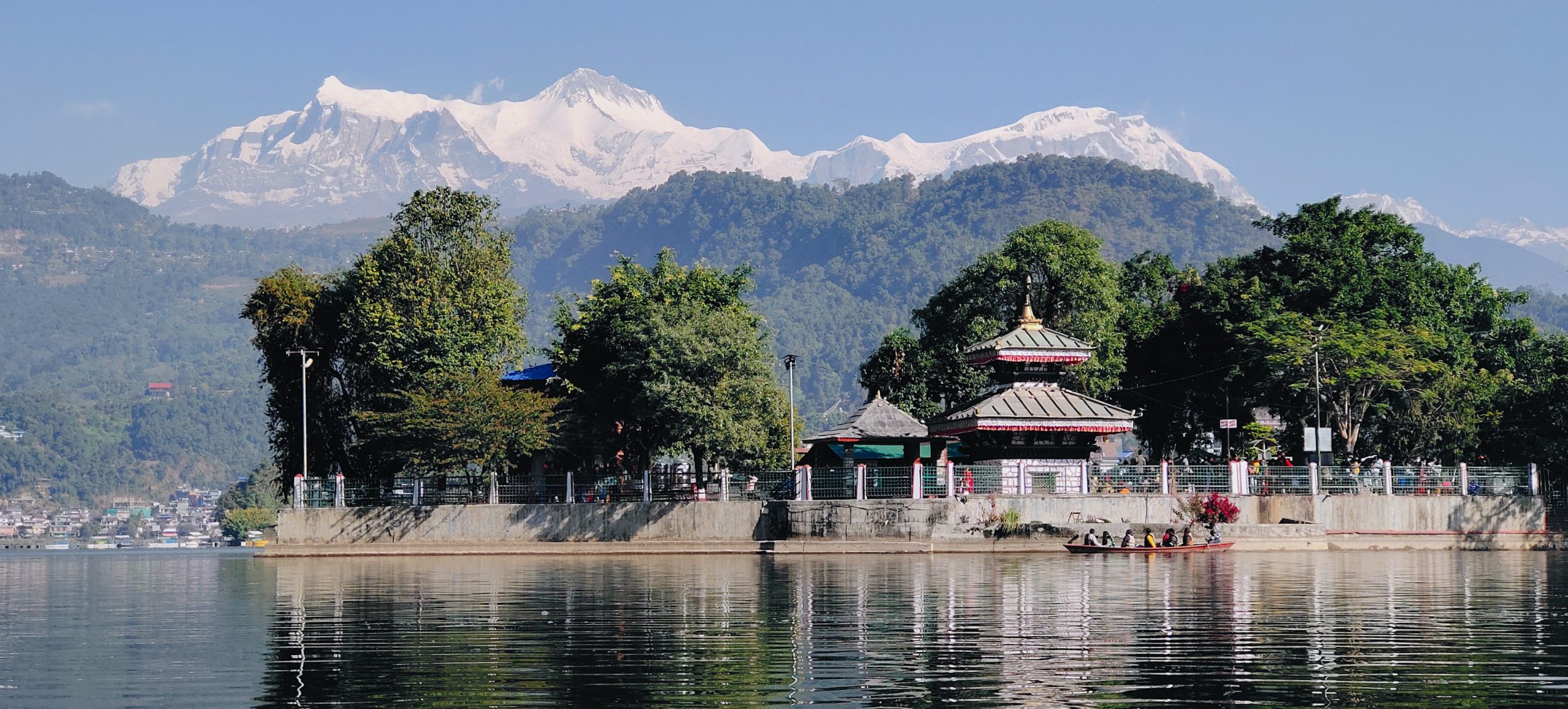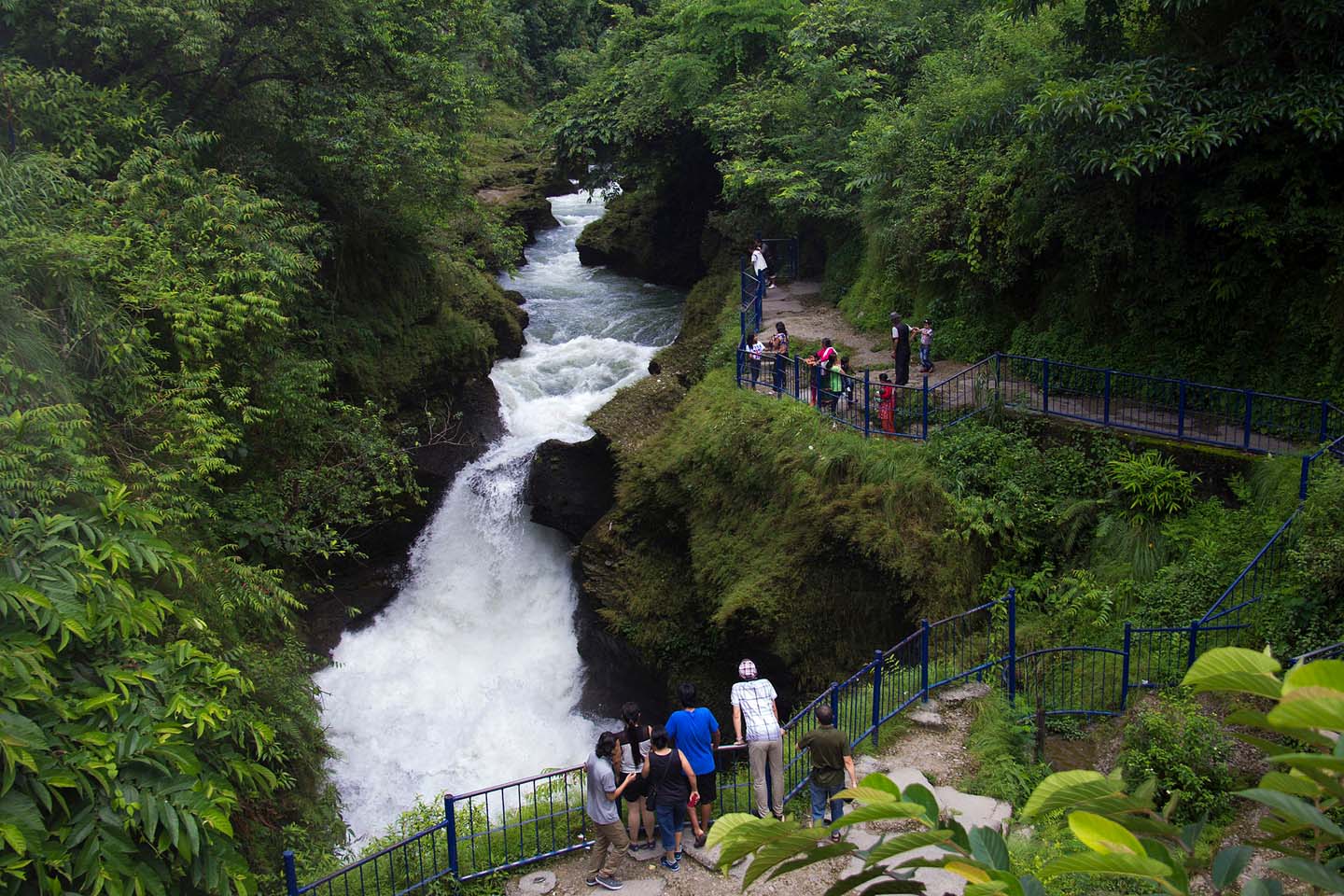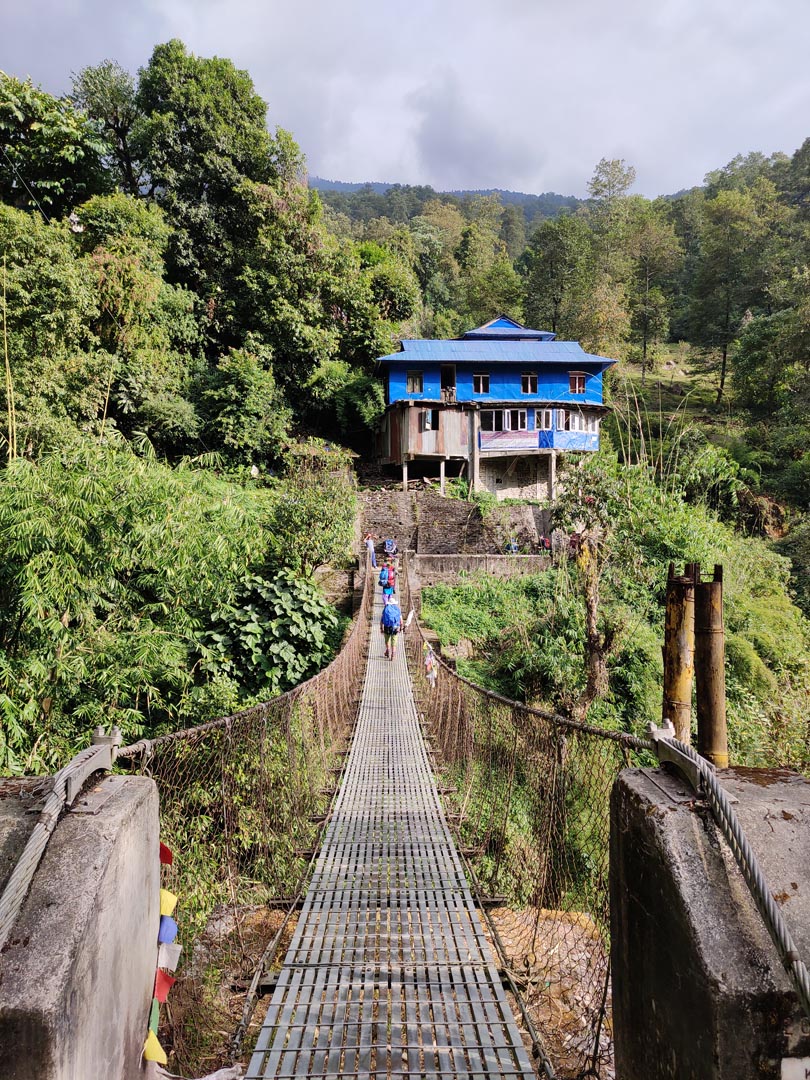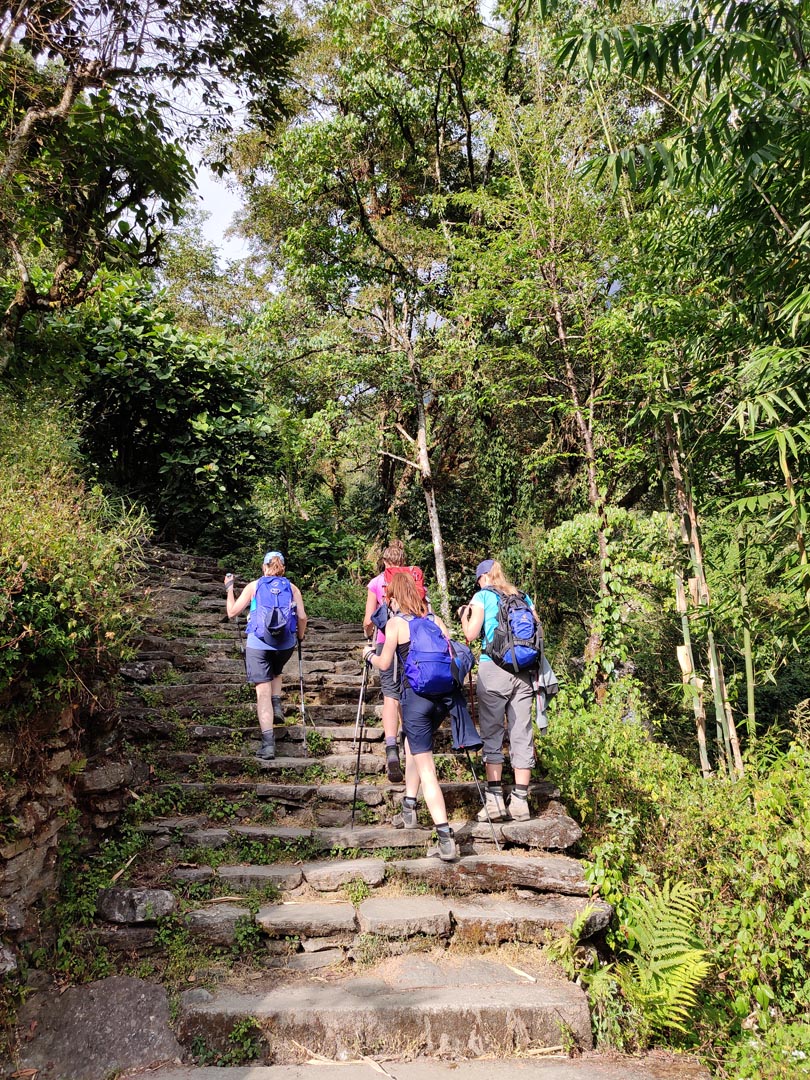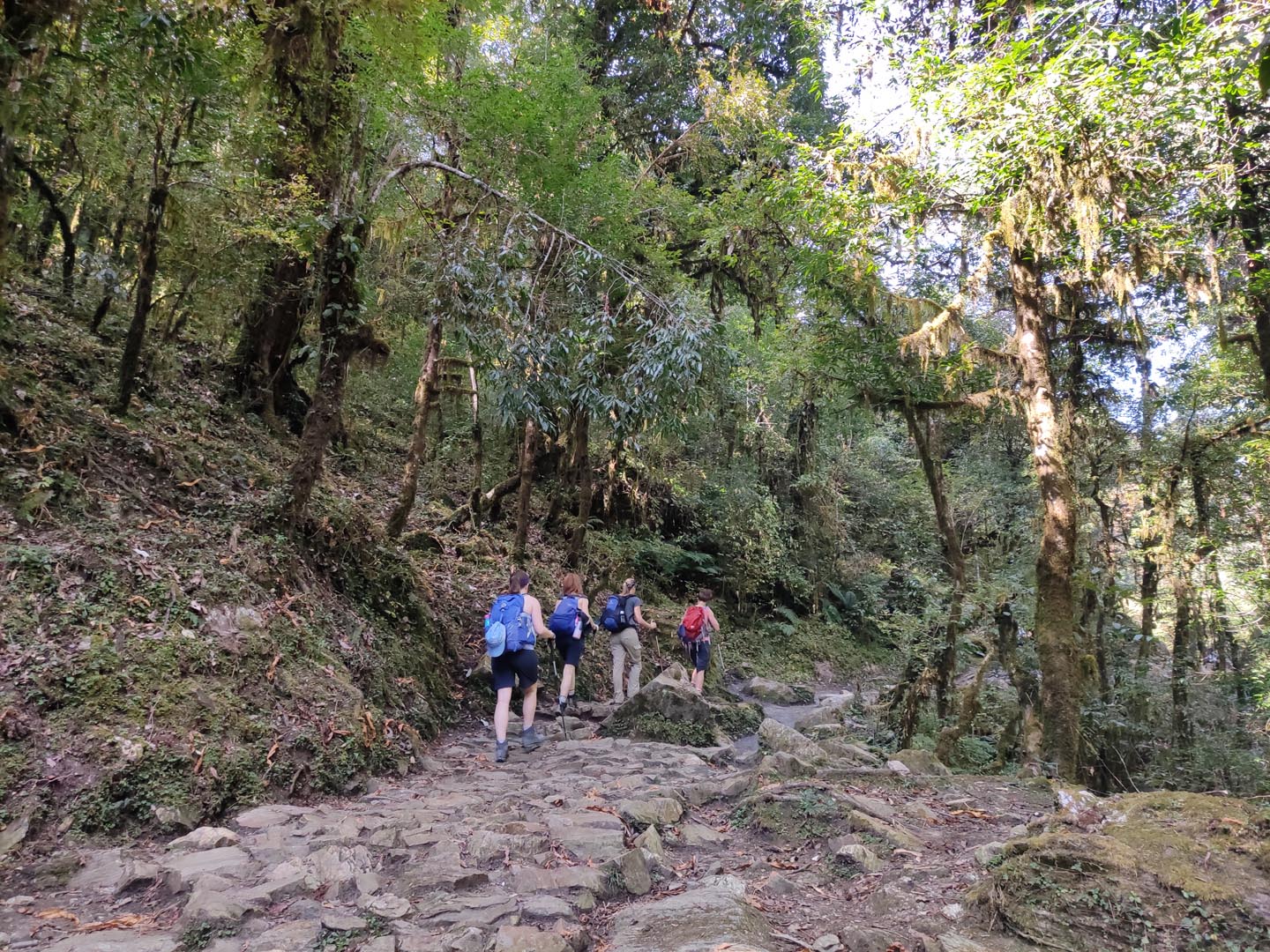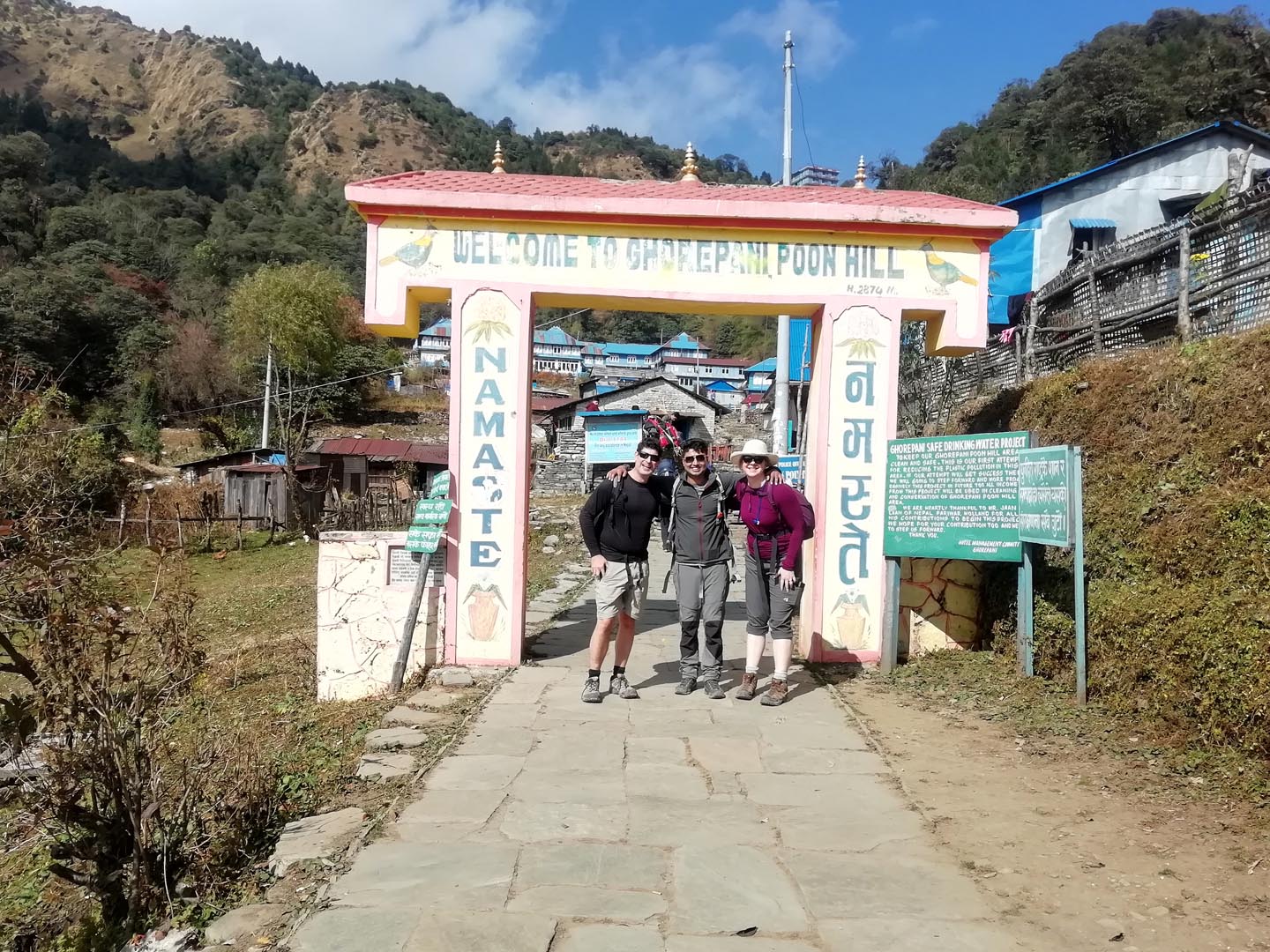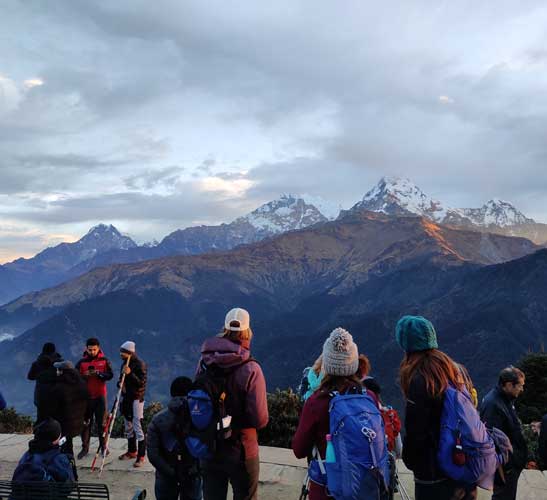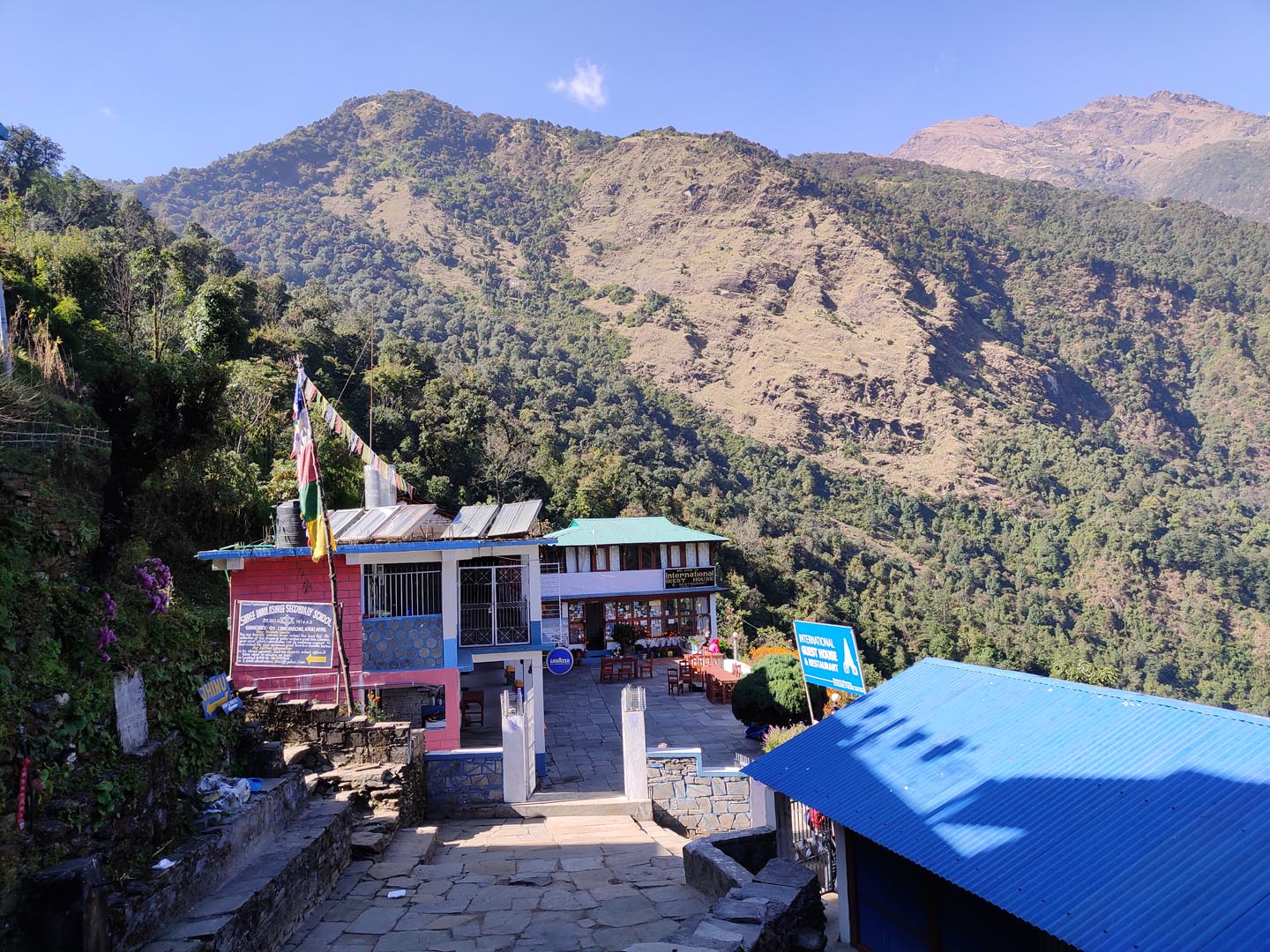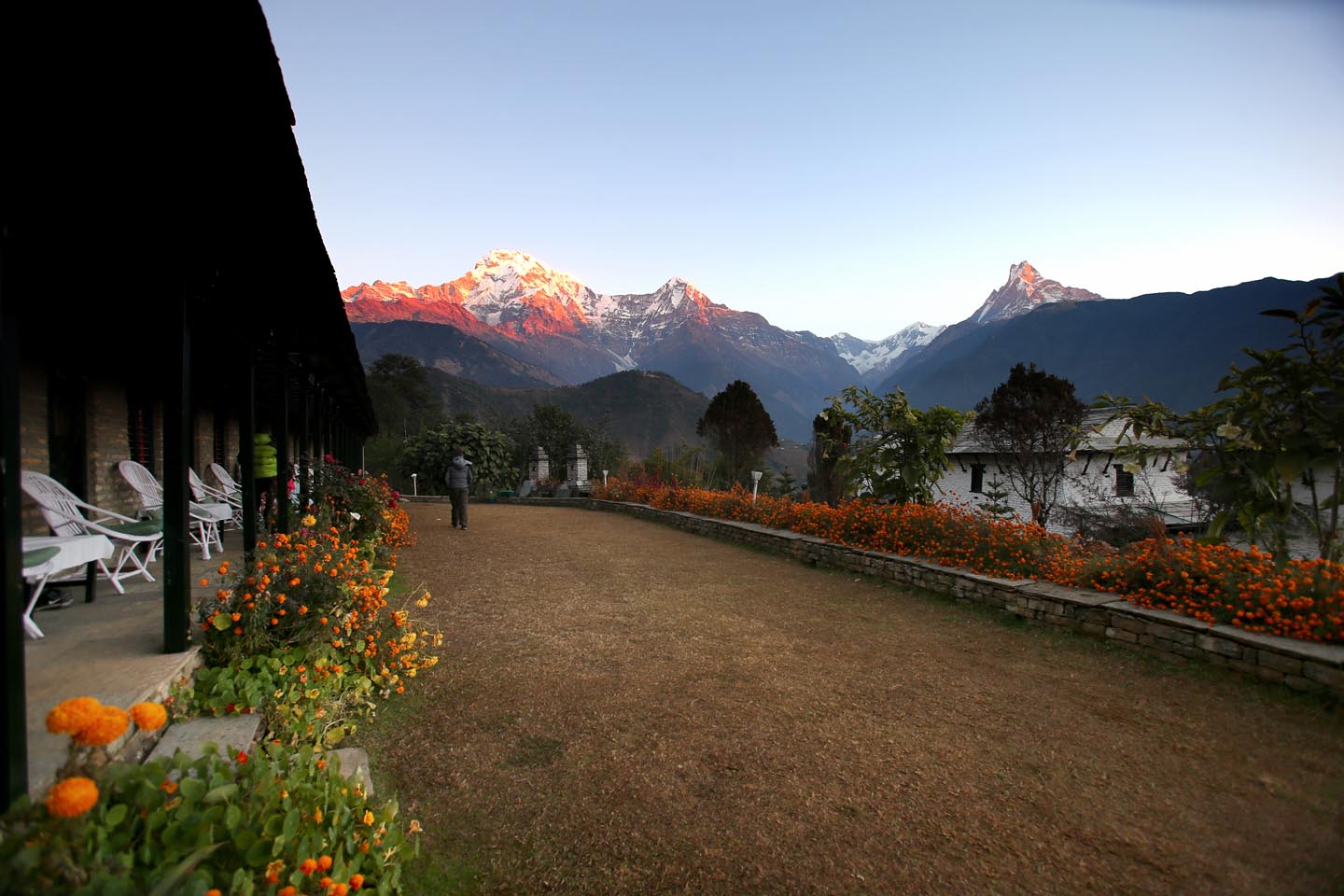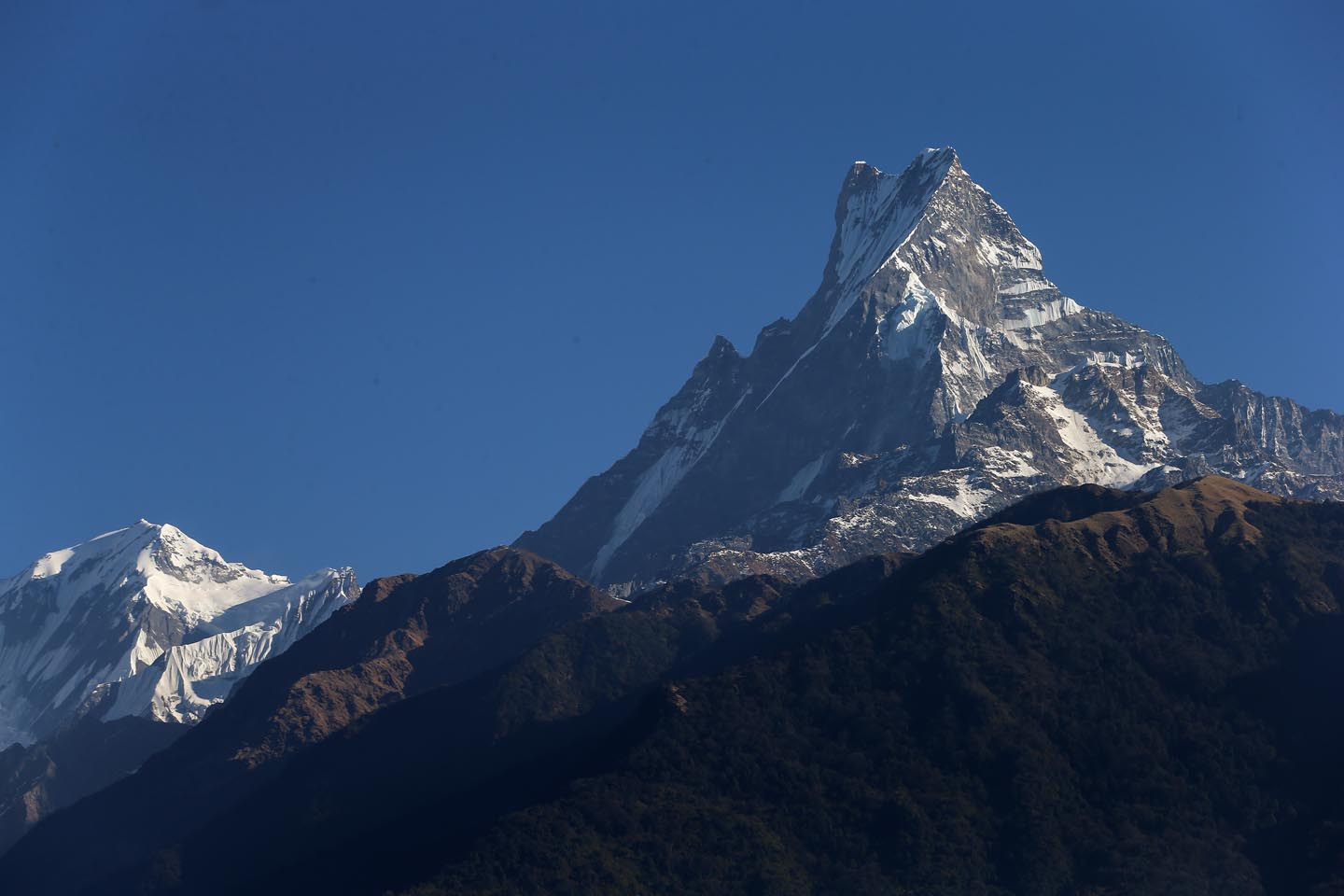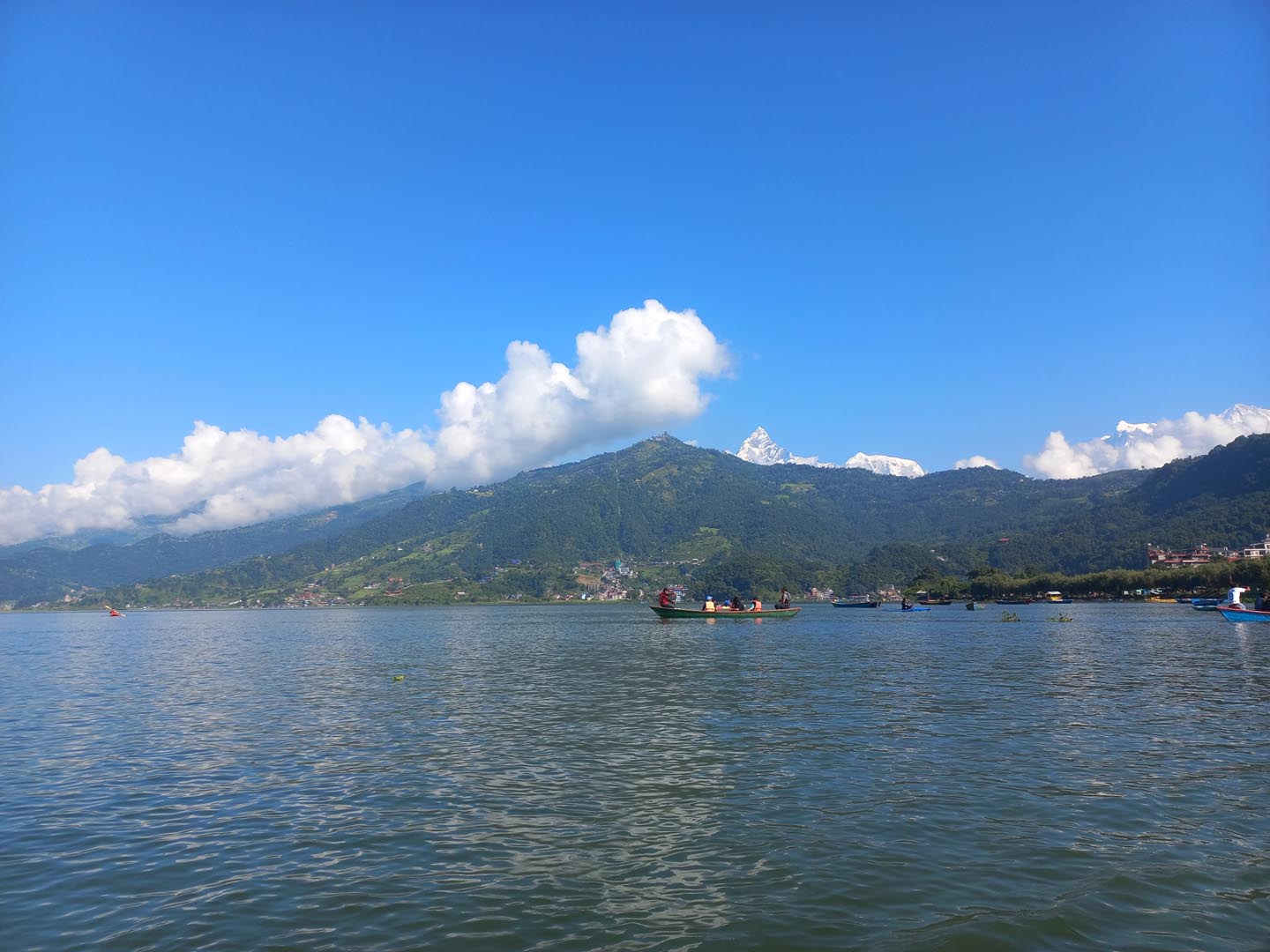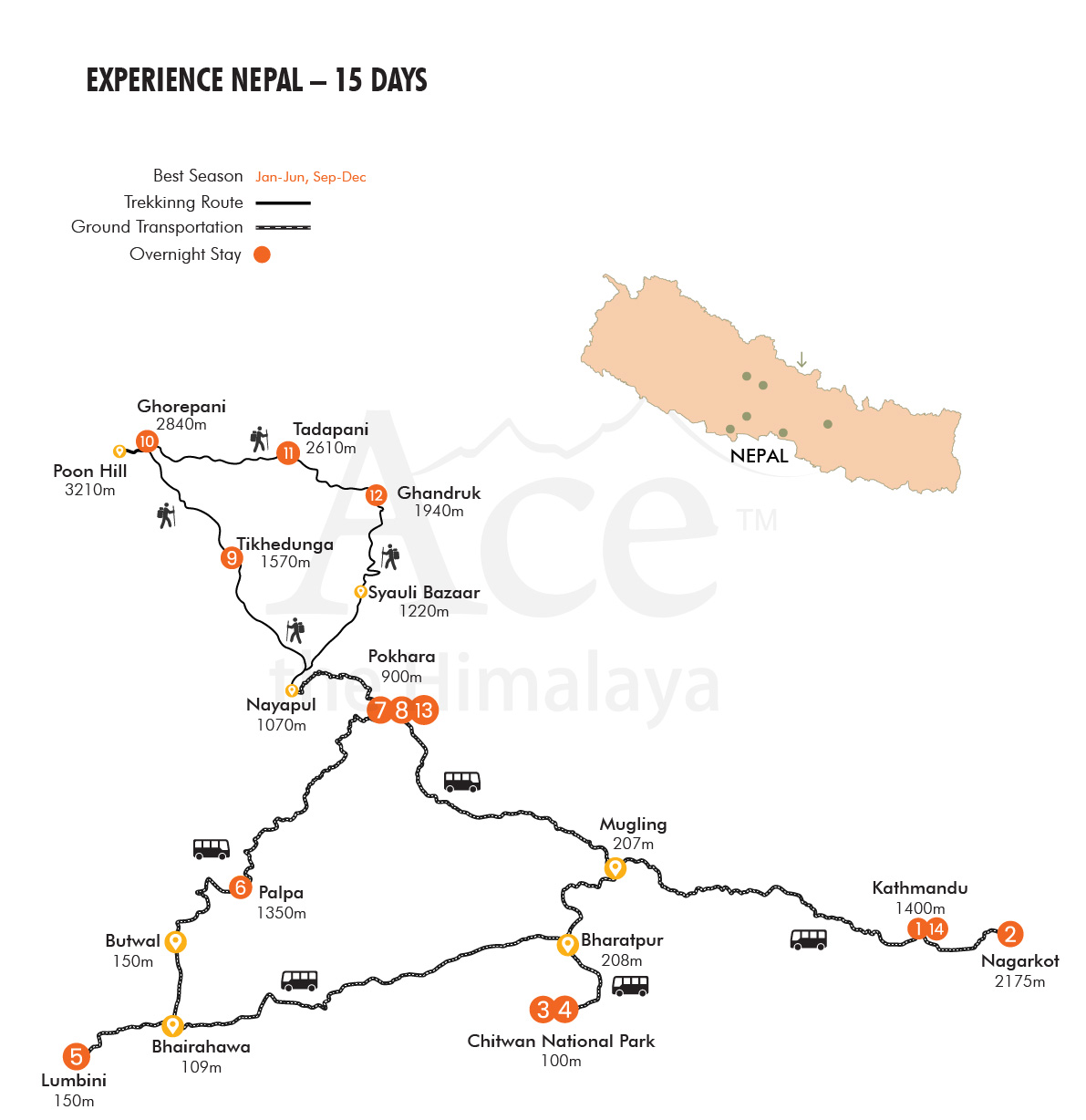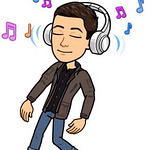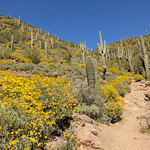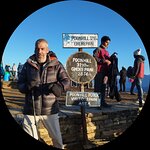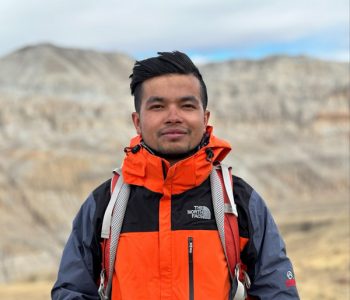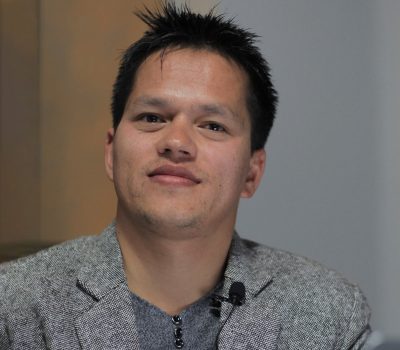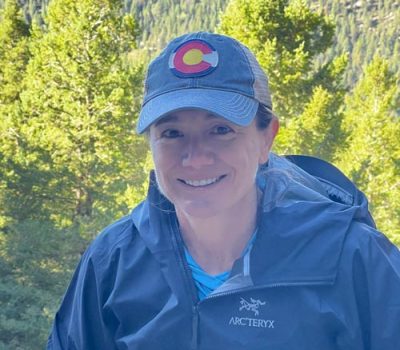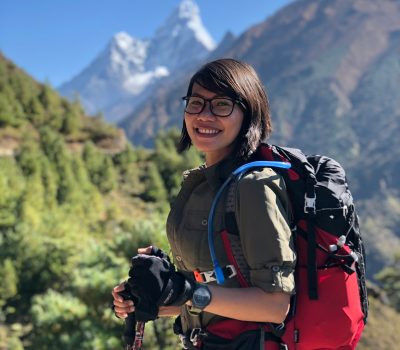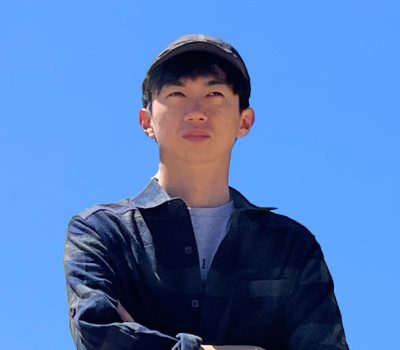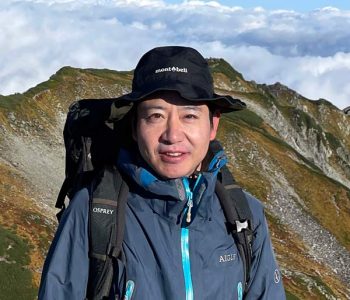Experience Nepal - 15 Days
Experience the wonders of Nepal. Discover cultural heritage sites - medieval city squares, temples and shrines that are spiritual centres and ancient Newari villages.
Trip Highlights
- Guided city tours in Pashupatinath, Buddhanath, Bhaktapur, Changunarayan etc.
- Explore the Newari Culture of Kathmandu Valley.
- Visit Lumbini, the birthplace of Lord Buddha.
- Explore the beautiful city of Pokhara.
- Spectacular sunrise/sunset and mountain views from Nagarkot and Sarangkot.
- Visit heritage town of Tansen, Palpa.
- Wildlife Activities in Chitwan National Park.
- Panoramic views of Himalayan peaks from Poon Hill.
- Short and easy trek in Annapurna Region.
- Experience Gurung culture at the heritage village of Ghandruk.
Trip Overview
Experience the wonders of Nepal, Experience Nepal. Discover cultural heritage sites – medieval city squares, temples, and shrines that are spiritual centers and ancient Newari villages. Take a guided walk to the UNESCO World Heritage Sites in Kathmandu.
Enjoy a delightful drive to the windy hills of Nagarkot and spend a night at the hill station famous for its panoramic Himalayan views and magical sunrises and sunsets. Explore the abodes of the endangered one-horned rhino and Royal Bengal tiger at Chitwan National Park. Do a jeep safari and glide along the river on a traditional dugout canoe. Step on hallowed ground at Lumbini, the birthplace of Lord Buddha.
Visit the heritage town of Tansen in Palpa and watch the traditional weavers of ‘Dhaka’ (traditional fabric) at work. Let the spellbinding natural beauty of Pokhara work its magic on you. Get inspired by its natural wonders – Phewa Lake flanked by the snow-capped peaks of Machhapuchhre (Fishtail Peak), Dhaulagiri and Annapurna, Seti River Gorge, Davis Falls, etc.
Enjoy an easy trek to Ghorepani in Annapurna Region. Capture mesmerizing views of the Himalayas from Poon Hill. Sample mountain hospitality at the Gurung heritage village of Ghandruk.
Short Itinerary
Arrival at Tribhuvan International Airport in Kathmandu (1,400 m) and transfer to hotel. Overnight at a hotel.
Guided sightseeing in Kathmandu. Drive to Nagarkot (2,195 m) in a Private tourist vehicle – 1 to 3 hours. Overnight at a hotel.
Drive to Chitwan (415 m) from Nagarkot in a Private tourist vehicle – 5 to 7 hours. Overnight at a resort.
Full-day Jungle Safari & Activities in Chitwan. Overnight at a resort.
Drive to Lumbini (150 m) from Chitwan by Private tourist vehicle – 4 to 6 hours. Overnight at a hotel in Lumbini.
Half-day Sightseeing at Lumbini. Drive to Palpa from Lumbini in a private tourist vehicle – 3 to 5 hours. Overnight at a hotel in Palpa.
Drive to Pokhara from Palpa in a Private tourist vehicle – 5 to 7 hours. Overnight at a hotel in lakeside.
Guided sightseeing in Pokhara. Overnight at a hotel in lakeside.
Drive to Nayapul (1,010 m) from Pokhara – 1 to 3 hours. Trek to Tikhedhungga (1,570 m) – 3 to 4 hours. Overnight at a guesthouse.
Trek to Ghorepani (2,840 m) from Tikhedhungga– 5 to 6 hours. Overnight at a guesthouse.
Early morning hike up to Poon Hill (3,210 m) and back to Tadapani (2,610 m) – 6 to 7 hours. Overnight at a guesthouse.
Trek to Ghandruk (1,940 m) from Tadapani – 4 to 5 hours. Overnight at a guesthouse.
Trek to Nayapul (1,010 m) from Ghandruk. Drive back to Pokhara from Ghandruk – 1 to 3 hours. Overnight at a hotel in lakeside.
Drive to Kathmandu from Pokhara in a Private tourist vehicle – 7 to 9 hours. Overnight at a hotel.
Transfer to the International airport for your final departure.
 Trip Note
Trip Note
Our standard itinerary might differ slightly due to unpredictable happenings and events out of our control. Factors such as flight cancellation/delay, unfavorable weather, natural calamities, newly implemented government rules, political affairs, transport, etc., are possible. Evaluating the situation’s possible solutions allow the tour to resume as much as possible based on the best alternatives. In these times, we look for your cooperation and flexibility.
It is advised you arrive one day before the trip starts date so you can rest and it also gives you time to buy some local wear for the tour. Moreover, Ace the Himalaya is one of the prime supporters of the social organization Sambhav Nepal. There are several ongoing projects in a village called Arupokhari (Gorkha district) which you are more than welcome to visit or even volunteer at. You will be able to gain a different insight into the lives of the people in the hills and also make a difference!
Departures & Availability
Our groups are small with maximum 14 people. We create groups of independent travelers, friends and families which maintains close interpersonal connection, engage more and get into depth of the journey. Choose a date from the calendar to reserve your spot.
Looking for personalized experience? We organize privately guided journey which is mainly designed to fit your taste and interest. Please fill out the form below to get started.
Price Includes
- All (international and domestic) airport transfers on a tourist vehicle
Twin sharing/double accommodation in a 3-star hotel in Kathmandu for 2 nights, Pokhara for 3 nights, Nagarkot , Lumbini & Tansen for 1 night each including breakfast
Twin-sharing/double accommodation at a resort in Chitwan for 2 nights including Breakfast, Lunch, and Dinner with jungle activities in the national park.
Twin-sharing guesthouse accommodation during the trek for 4 nights
- All your standard meals during the trek (Breakfast, Lunch, and Dinner) including one hot drink and seasonal fruits
- Porters during the trek for carrying luggage (1 porter for every 2 clients)
- Permits for Annapurna Conservation Area and TIMS (Trekkers' Information Management System)
All ground transportation by private tourist vehicle
Guided city tour in Kathmandu, Pokhara, Chitwan, and Lumbini on a Private tourist vehicle
- Ace the Himalaya’s licensed English-speaking guide
- The required number of ground staff during the tour like Driver, Helpers etc.
- Wages, accommodation, meals, gear, insurance, and medications for all staff
- Entry permits and fees for all temples, parks, monasteries, and cultural and historical sites.
1 Ace the Himalaya’s duffle/kit bag & sun hat
- A farewell dinner on the last night in Nepal
- All administrative expenses and government taxes
Price Excludes
- International flight fare and airport departure tax
Lunch and dinner whilst in Kathmandu, Nagarkot, Pokhara, Lumbini, and Tansen about USD 15 to USD 20 per person per day.
- Any beverages including bottled and boiled water
- Tips for hostess and driver. (Tipping is expected).
- Nepal Entry Visa (Visa can be acquired easily after your arrival at Tribhuvan International Airport in Kathmandu with a fee of USD 50 for 30 days visa and USD 125 for 90 days visa)
- Travel insurance along with high-altitude emergency evacuation coverage
- Any expenses other than the Price Include section
Detailed Itinerary
Expand AllDay 01: Arrival at Tribhuvan International Airport in Kathmandu and transfer to hotel
Our airport representative will be receiving you at Tribhuvan International Airport, Kathmandu and s/he will be displaying an Ace the Himalaya signboard outside the airport terminal. You will be then transferred to your respective hotel in our private tourist vehicle.
Day 02: Guided sightseeing in Kathmandu. Drive to Nagarkot in a Private tourist vehicle
We host a pre-trip meeting at your hotel in Kathmandu and introduce your tour guide. Please seek this opportunity to ask questions about your trip. This includes a final briefing and preparations for the trip. For the meeting, please make sure you bring your passport, two copies of passport-size photos, and a readable copy of your travel insurance policy. During this meeting, please clear the due balance, if any, and sign the legally binding trip form as well as the non-liability disclaimer. Please inform us in advance if you will be arriving late and therefore are unable to attend the pre-trip meeting.
After the pre-trip meeting, your sightseeing trip will start. You will have a private vehicle and a professional tour guide at your disposal. We will visit the following UNESCO World Heritage sites before heading to Nagarkot.
Pashupatinath Temple (UNESCO World Heritage site)
Pashupatinath is one of the most sacred Hindu shrines in the world and lies 5 kms east of the city center. The richly-ornamented pagoda houses the sacred Linga, or phallic symbol, of Lord Shiva. Chronicles indicate the temple’s existence prior to 400 AD. Devotees can be seen taking ritual dips in the holy Bagmati River flowing beside the temple.
Boudhanath (UNESCO World Heritage site)
Later visit Boudhanath, the 2500 years old Buddhist stupa in the Valley built in 5th century with four pairs of eyes of Lord Buddha in four cardinal directions keeping an eternal watch over the people and their doings. You will find Buddhist pilgrims going round the stupa spinning the prayer wheels.
Changunarayan Temple (UNESCO World Heritage site)
The temple is situated on a ridge overlooking the Kathmandu valley, about 12 kms to the east of the city. It is dedicated to the Hindu god Vishnu. It is one of the finest and oldest specimens of pagoda architecture built in 323 AD by King Haridutta Verma. The temple is richly decorated with sculptures and carvings, and its position above the Kathmandu valley affords a beautiful view of the surrounding countryside.
Bhaktapur Durbar Square (UNESCO World Heritage site)
As you walk in, you will feel a sense of inner harmony. Bhaktapur Durbar Square is a collection of pagoda and shikhara–style temples grouped around a fifty-five-window palace of brick and wood. The attraction of the Bhaktapur Durbar Square is the Lion gate, the Golden gate, the Palace of fifty-five windows, art galleries, and the statue of King Bhupatindra Malla.
Later in the evening, we will drive to Nagarkot which takes about one hour.
Nagarkot
Nagarkot is a popular location for tourist and a favorite weekend getaway among those seeking mountain views in comfort and quiet. The overwhelming panorama of the major peaks of eastern Nepal’s Himalayas including Mount Everest, Manaslu, Ganesh Himal, Langtang, Choba Bhamre, Gauri Shankar and Numbur can be seen from here. At sunrise, the Himalayan range, stretching from Dhaulagiri in the west all the way past Everest to Kanchenjunga in the east, emerges from the darkness to greet the happy visitors with its awe-inspiring majesty & beauty.
Day 03: Drive to Chitwan from Nagarkot in a Private tourist vehicle
We wake up early today to catch a glimpse of the spectacular sunrise over the Himalayas. Weather permitting, the seemingly endless chain of mountains appear glossy in the north, while the entire Kathmandu valley can be clearly seen towards the west.
After we have breakfast we head to Chitwan National Park. On reaching resort, you would be briefed by our Guest Relations Officer. After the lunch you would be going for Village tour. Meanwhile the dinner would be ready by the time you return to the resort. Overnight at Resort.
Day 04: Full-day Jungle Safari & Activities in Chitwan National Park
Wake-up call followed by tea or coffee and then proceed for canoeing/jeep safari.
A traditional dug-out canoe takes you on a silent trip down the Rapti River to view aquatic birds and the animals of the river banks. Jeep safari by land rover starts from canoeing put out point covering the distance of approximately 10km with chances of seeing rare wildlife. Also visit the elephant stables and spend some time with the tuskers. Later take a dip in the pool, or relax on your verandah.
Day 05: Drive to Lumbini from Chiwan by Private tourist vehicle
Today transfer to Lumbini from Chitwan. Arrive at Lumbini. Upon arrival transfer to hotel.
Lumbini is the birthplace of Lord Buddha and a World Heritage Site 285 km south-west of Kathmandu. This pilgrimage site in southwest Nepal attracts devout Buddhists from around the world, who arrive to pay homage at the Sacred Garden where the ‘Enlightened One’ was born. A famous landmark is the Ashoka Pillar raised by the great Emperor who converted to Buddhism. Today Lumbini has been enlivened by the multitude of architecturally beautiful temples, stupas and monasteries built by various international Buddhist communities.
Day 06: Half-day Sightseeing at Lumbini. Drive to Palpa from Lumbini in a Private tourist vehicle
Half- Day Sightseeing in Lumbini.
Lumbini is hallowed ground as Shakyamuni Buddha was born here in southern Nepal more than twenty-five hundred years ago. As a sacred birthplace, it is an important pilgrimage site for Buddhists from around the globe. Many excavations have taken place here, around this small town in the southern Terai plains of Nepal. Ruins of the old city are clearly visible and many artifacts were unearthed during the excavation. Shakyamuni Buddha was born a prince to the ruler of the little principality. Important landmarks are the Maya Devi Temple and the Ashoka Pillar. The remains of many ancient stupas and monasteries can be found in the surroundings of Lumbini. The Ashoka pillar is said to have been erected by the Indian Emperor Ashoka in 250 BC and bears an inscription confirming this as the birth place of the Buddha. A stone image of Maya Devi giving birth to Lord Buddha as she holds onto a branch is seen in the Maya Devi Temple.
Later transfer from Lumbini to Tansen, Palpa; approximately 85 Kms / 3 hrs drive.
Tansen is a small ancient hill town situated 4,300 meters above sea level. It is located on the way from Pokhara to Lumbini. Major attractions here are the ancient culture, excellent mountain views, serene atmosphere and friendly people. The weather here makes it a pleasant place to visit in any season. On clear days Dhaulagiri, Annapurna, Manaslu, Gauri Shankar and other peaks can be seen. Dhaka – the most popular hand woven cloth of Nepal comes from this region. The Nepali topi (national cap) is made of Dhaka and you can see the weavers at work on their looms or visit a bazaar of Dhakas in Tansen.
Day 07: Drive to Pokhara from Palpa in a Privat tourist vehicle
Transfer from Palpa to Pokhara; 115 km/ 5-7 hours drive. Upon arrival, check in at the hotel in Lakeside.
We woke up early today to glimpse the spectacular sunrise over the Himalayas. After breakfast, we head to Pokhara on a tourist bus, van, or car, depending on the group size.
Day 08: Guided sightseeing in Pokhara
Breakfast at the hotel. You will have a private vehicle and a professional tour guide at your disposal. The places we visit are as below:
Visit Sarangkot
We wake up early in the morning and head to Sarangkot. About 45 minutes drive with 25 minutes hike brings us to the viewpoint of Sarangkot from where we get to enjoy the sunrise and close views of many mountains like Annapurna range, Dhaulagiri, Fishtail including views of the beautiful Pokhara Valley and Phewa lake. Afterwards it’s a 15-minutes walk down and 45 minutes drive to the hotel in Pokhara. Return to hotel for breakfast.
Later in the day we visit:
Bindhabasini Temple
It lies in the center of an old bazaar. It is dedicated to Goddess Bhagwati, yet another manifestation of Shakti. The park grounds offer a fine picnic and relaxing area.
Davis Falls
Locally known as Patale Chhango and in the southern flank of the Pokhara valley is where the stream flowing from Phewa Lake collapses and surges down the rock into a deep gorge, leaping through several potholes. This is hugely popular with tourists and locals alike.
Gupteshwor Cave
The revered Gupteshwor Cave is situated 2 kms from Pokhara airport. The entrance is right across from Davis Falls and the cave is almost 3 kms long. It has some big hall-sized rooms and some passages where you have to crawl on all fours. This cave holds special value to Hindus since a phallic symbol of Lord Shiva is preserved here in the condition it was discovered.
Phewa Lake and Barahi Temple
Situated at an altitude of 800m above sea level, it is the second largest lake in Nepal. With the Barahi Island Temple in the middle of the lake it is the most important religious monument in Pokhara. Built almost in the middle of Phewa Lake, this two-storied pagoda is dedicated to the female force Shakti. The reflection of Mt. Machhapuchhare and Annapurna can be seen in its serene water. Thick forest lies on the adjoining southern slopes of the lake.
Seti River Gorge
Carved by Seti-Gandaki, the gorge is one of the natural wonders of Pokhara. K.I. Singh bridge at Bagar, Mahendrapool & Prithivi highway Bridge near bus park, provides a perfect view of the river’s dreadful rush and the deep gorge made by the turbulent flow of white water.
Tibetan Refugee Camp
The Tibetan camp Tashi Ling, which is behind Gupteshwor Cave, is renowned for the production and trade of woolen carpets and other handicrafts. The original Tibetan settlers in this region migrated to Nepal in the ‘50s.
Day 09: Drive to Nayapul from Pokhara and then, Trek to Tikhedhungga
We begin our trek at Nayapul after a 1-hour drive on a private vehicle from Pokhara. After a short 15-minute walk along the banks of the Modi Khola, we reach Birethanti (1,025 m) a large village with many shops and teahouses. From there, the trail continues through the village and follows the north bank of the Bhurungdi Khola. The trail climbs steadily up the side of the valley to Hille at 1,430 m and after a short climb, we reach Tikhedhunga at 1,540 m. Today’s walk is relatively short and easy, a prelude to the trekking experience in the Annapurna region.
Day 10: Trek to Ghorepani from Tikhedhungga
We move on towards the steep climb to Ulleri, a large Magar village at an altitude of 2,070 m. The trail ascends more gently from this point, through fine forests of oak and rhododendrons towards Banthanti at 2,250 m. Then we trek towards Nangethanti at 2,460 m. After an hour of walking, we arrive at Ghorepani (2,880 m).
Day 11: Early morning hike up to Poon Hill and back to Tadapani
Today, very early in the morning, we start hiking to Poon Hill at an elevation of 3,193 m, a brilliant mountain range spectacle. This vantage point provides an unobstructed view of the sunrise over the high Himalayas. There we spend about 1 hour, then return to Ghorepani where we take a hot breakfast at a hotel. Then we make a climb along ridges, and through pine and rhododendron forests to Deurali (2,960 m). After that, we descend to Banthanti, then turn off to Tadapani.
Day 12: Trek to Ghandruk from Tadapani
From Tadapani the trail descends through forests to Ghandruk, a village of Gurung people, one of the ethnic groups of Nepal. They have their own dialect, culture, costume, and life style. Ghandruk is also home to many Gurkha soldiers. It is a famous destination for trekkers as it is known for its beautiful mountain views and also because it’s within easy reach from Pokhara and Kathmandu. We have the afternoon to visit the Annapurna Conservation Office, museums and explore the village.
Day 13: Trek to Nayapul from Ghandruk. Drive back to Pokhara from Ghandruk
Day 14: Drive to Kathmandu from Pokhara in a Private tourist vehicle
Today transfer to Kathmandu from Pokhara by private tourist vehicle; 200 Kms / 7-9 hrs drive.
After returning to Kathmandu, you have the afternoon and the evening free. Explore more of the city on your own or stroll along the streets of Kathmandu for some last-minute shopping. In the evening, we host a farewell dinner in a fine restaurant. (Your guide(s) and office staff will accompany you). You have the option to extend your trip to continue with a rafting adventure, Kathmandu valley shopping tour, mountain biking, and other activities.
Day 15: Transfer to the international airport for your final departure
The trip concludes – our airport representative will drop you at the international airport in Kathmandu for your flight departure from Nepal.
Gears and Equipment
All you need to bring for this tour is simply some comfortable clothes. There is no requirement for special equipment on the tour.
Whereas, for the trek, you need to be extra careful according to the season you’re traveling in.
However, for your ease, the following gives you a general idea about the personal items you need to manage for the trip. The personal items referred to here are optional and depend upon your choice. The most important factor to be considered while choosing the equipment and your backpack is the time of the year you are traveling.
We will supply complimentary water and a windproof duffel bag, which you can use on the tour for your shopping purpose. The duffel bag is yours to keep.
Therefore, this list is only a guide. You can use the list as a reference. There are numerous options, brands, and versions of each piece of clothing and equipment. Use your experience and the listed features to find the best gear for you. Some of the above equipment can be easily found in stores in Kathmandu.
(please note that winter wears are only necessary if in case you’re traveling in the month of Nov – Dec)
General
- T-shirts, cotton pants (loose jeans/khakis), shorts, and a waterproof shell jacket (preferable if you are traveling in the rainy season from June to September)
- Light camping shoes or sneakers
- Sandals/flip-flops (Optional)
- Puffy down jacket (We have rental jackets available for an additional USD 25)
- Daypack (35-45 liters recommended) with rain cover
Upper Body
- Sun hat or cap (We'll provide you with a free Ace the Himalaya baseball cap.)
- Knitted hat/Beanie
- Scarf/Neck Gaiter/Buff (highly recommended)
- Sunglasses
Torso
- Technical fabric base layer (light for warmer months, heavy for colder months)
- Technical fabric short (2) and long sleeve (2) shirts
- Waterproof, windproof shell
- Fleece jacket or pullover
Lower Body
- Technical fabric base layer (light for warmer months, heavy for colder months)
- Hiking pants (2)
- Comfortable pants for inside the teahouses
- Waterproof, windproof shell
- Hiking shorts
Hands
- Wool or technical fabric liner gloves
- Hard-shell outer gloves (insulated for colder months)
Feet
- Wool or technical fabric warm socks
- Hiking socks
- Liner socks (optional such as silk)
- Trekking/hiking boots (waterproof recommended)
- Casual shoes
- Gaiters (lightweight for dust or heavy for snow in colder months)
Undergarments
Note: The quantity of each article of clothing can be adjusted to suit the preferences of each participant.
- Technical fabric/quick drying is best for underwear (opportunities to launder during the trip)
- Sports bras (women)
- Pajamas or sleeping clothes
First Aid Kits and Medications
- (Note: Guides carry medications and first aid kits during the trip. However, personal kits and medications are highly recommended.)
- Sunscreen
- Lip balm
- ointment
Other Essentials
- Passport
- Extra copies of passport-sized photos
- Reusable water bottle
- Toiletry kits
- Water purification tablets or UV water purifier (if you plan to treat water)
- Hydration bladder
- Towel
- Pillowcase
- Toilet paper (2 rolls)
- High protein snacks (such as protein bars or nuts)
- Waterproof/dry bags for carrying important documents and money
- Airline tickets (Please leave a copy at our office in Kathmandu. This can be useful if there is a change in the date of the flight.)
Optional
Once in Nepal, if you have the time, you can purchase supplies and gear for hiking. Thamel, Kathmandu’s tourist hub, is home to many shops where you can get a variety of reasonably priced trekking equipment.
- Power bank or extra batteries
- Cameras and mobile phone
- Cards/book
- Binoculars
- Trekking poles
- Whistle
Important Information
- We give you a free duffel bag and baseball cap during your pre-trip meeting in Kathmandu. The duffel bag will be used to pack your trekking supplies.
- For every two participants, we assign one porter. The duffel bag, which should weigh around 10 kg/22 lbs, will be carried by the porter throughout the walk.
- To carry your daily necessities like cash, crucial papers, a water bottle or bladder, a camera, toiletries, sunscreen, a notebook, clothing, etc., you must have your own daypack (with a waterproof cover).
- You can store your luggage (non-trekking items) at the hotel in Kathmandu & Pokhara.
- A down jacket with a hood is a must for altitudes above 4,000 m to keep warm. You can rent a down jacket for USD 25. Please note that in case of loss or damage, you need to reimburse the cost of USD 100 per item.
- You can rent a 4-season sleeping bag for USD 25. Please note that in case of loss or damage, you need to reimburse the cost of USD 100 per item.
Note: Some clothing, especially form-fitting, figure-hugging items made of elastic material (like yoga pants), may offend locals. Therefore, if you choose to wear these clothes for comfort, please make sure to wear something over them.
Trip Video
FAQs for Experience Nepal
General
Why trek with Ace the Himalaya?
Ace has a reputation for successfully leading treks with knowledgeable leaders and staff taking care of all your travel needs. We are a certified sustainable travel company that also endorses the idea of giving back to the community by participating in various philanthropic activities. Here are 17 reasons why you should choose Ace the Himalaya for your next adventure!
Is Nepal open to travelers following the Covid-19 pandemic?
Indeed, Nepal is entirely open. Travelers are welcome in Nepal without any restrictions. Arriving travelers can obtain a visa on arrival at the Kathmandu airport as well.
What are the conditions to travel to Nepal post Covid-19?
Traveling to Nepal is now hassle-free. You don’t need a vaccination certificate or negative PCR test, but check with your airlines and transit countries for any specific requirements.
We suggest you look at the Nepal immigration site https://www.immigration.gov.np for the most up-to-date information.
What additional documents do I need?
- Two passport-sized photos (2×2 inch) to give to our office staff
- A copy of your international flight ticket to give to our office staff
- A copy of travel insurance to give to our office staff
Do we book our own international flights to and from Nepal?
Yes, you need to book your own international flights. We are a local agent and it would cost you significantly higher to book through us. Please find more information in the International Flight page.
Can the guide speak English?
Our guides are fluent in English. All the guides that we assign speak and understand English. They’ll share with you the fascinating stories, traditions, and folklore of the mountains. The guides will also help you communicate with the locals since many shopkeepers and hosts of teahouses don’t speak English.
Is hiring a guide necessary?
You can tour without a guide. A guide is available to help you with your sightseeing by providing knowledge and insights about the locations you visit. Our tour leaders are qualified experts.
When talking about their trip, our guests frequently remark on how much fun they had and how crucial their guide was to making it successful.
Is hiring a guide necessary even if I have trekking experience?
You can hike without a guide. A guide is there to assist you in going forward and making alternative plans and arrangements when unanticipated occurrences happen or when things get difficult. Our hiking leaders are qualified experts. When talking about their trip, our guests frequently remark on how much fun they had and how crucial their guide was to make it successful.
Weather and Temperature
What is the best season for this trek & tour?
Our trekking season extends from mid-September to May. From early September, the monsoonal rains decrease. By end of September to December, the weather is usually stable with mild to warm days, and cold nights. February, March, April, May, June, October, November, and December is the best time to do this trek.
The best season for this tour is anytime between January to June and September to December.
What kind of weather and temperature can I expect while trekking?
Due to its tendency to be localized, the weather in the Everest region is challenging to forecast. You could see rain, fog, cold, or hot and sunny weather while trekking. It is best to be equipped to handle various weather situations. In the Everest region, nighttime temperatures are significantly lower than midday temperatures. In less than a day, the temperature can change from a high of 25°C (77°F) to a low of – 20°C (-4°F). The weather and temperature ranges are typically predictable based on the month and season, even though it might be challenging to predict what each day in the mountains will bring.
Spring – March/April/May/June
Despite being the busiest season, spring is perhaps the best time to visit the Everest region. Activities assisting the expedition teams take place in Everest Base Camp. The many varieties of blossoming trees should be visible, and the sky should be clear with stunning vistas. During springtime, the average temperature is 20°C (68°F), with a high of 25°C (77°F) during clear days and a low of – 15°C (5°F) overnight above 4000 meters.
Monsoon season – July/August through Mid-September
Since it rains heavily at elevations below 3500 meters, this season isn’t exactly ideal for travel in the Everest region. While it can occasionally be dry in areas above 4000 meters, it frequently rains so therefore not many people travel during this season. Trekking during the monsoon season has some advantages, such as a greater possibility of seeing waterfalls and the best opportunity to escape crowds. During the monsoon, the average temperature is 22°C (71.6°F), with a high of 30°C (86°F) during clear days and a low of- 5°C (23°F) overnight above 4000 meters.
Autumn – End of September/October/November
In the Everest region, autumn is equally as busy as spring. It is one of the best times to go, too. While the plants and trees are not in bloom, the sky is often clear, offering breathtaking vistas from almost every viewpoint. The average temperature in autumn is 17°C (62.6°F), with a high of 20°C (68°F) during clear days and a low of – 15°C (5°F) overnight above 4000 meters.
Winter – December/January/February
Due to fewer tourists, some people like winter travel. Even while the views are still beautiful, it can be cloudy, thus adding extra days is highly advised during this time. The average temperature is 10°C (50°F), with a high of 17°C (62.6°F) during clear days and a low of – 20°C (- 4°F) overnight above 4000 meters. The teahouses provide extra blankets for warmth at night.
What is the temperature rating of the sleeping bag that you lend to trekkers?
The temperature rating of the sleeping bags that we rent to trekkers is about -10°C (14°F). Also, our guides can obtain extra blankets if needed at the teahouses.
Arrival and Visas
Is it possible to obtain a visa for Nepal upon arrival at the airport?
Yes, you can obtain a Nepal visa upon your arrival at the airport. There are kiosks in the arrival hall that you use to complete the necessary forms. The cost is USD 30 for a 15-day tourist visa, including numerous entries, or USD 50 and USD 125 for a 30-day or 90-day tourist visa including numerous entries respectively. You should carry cash (USD) with you to pay your visa fees quickly and easily, as digital payments are frequently unavailable.
Who will come to pick me up at the airport upon my arrival?
Our staff will be waiting for you outside the airport terminal with our signboard (Ace the Himalaya). You will be accompanied to a hotel in a private tourist vehicle.
Payments and Extra Costs
How much additional money do I need per day?
Typically, USD 15 to 20 per person per day will be sufficient. This is to purchase water, tea/espresso, snacks, and hot showers in the mountains and for lunch or dinner in Kathmandu. Additionally, if you want to buy souvenirs or native Nepali goods, you can bring extra cash with you.
Is it possible to reserve a trip now and pay a deposit later, or do I have to pay a deposit at booking/reservation?
When you book, you must pay a 30% deposit to secure your itinerary. The remaining balance can be paid upon your arrival at Kathmandu or before arrival. US Dollars cash and credit cards (Visa, Master, and American Express) are accepted once in Nepal. Please note a 4% transaction fee will be added for all credit card transactions.
How do I pay the remainder of my balance upon arrival in Kathmandu? US Dollars cash or credit card?
You can make payments via US Dollars cash or credit card (Visa, Master, and American Express). A 4% transaction fee is added if paying with a credit card. Thus, we encourage you to pay with USD cash if you are planning to pay upon your arrival in Kathmandu.
We prefer you pay with larger bills (USD 50 or 100). Please note that the cash should not be older than 2009 and in good condition, as banks do not accept worn, torn, or crumpled bills.
How are the ATM and money exchange facilities in Kathmandu?
There are ATM and money exchange facilities almost every few meters in Thamel, where you will be staying in Kathmandu. So, you can easily use your cards to cash out limited sum of money to which a minimum charge is deducted by the ATM facility itself. You can easily exchange your foreign currencies in currency exchange centers for an exact rate.
Can I use credit cards in the places I visit?
In Kathmandu, Pokhara, and other city areas yes – to some extent. Once you are out of the cities, all you need is cash. Please change the currency to local Nepali Rupees before you go to the mountains.
Who Can Trek?
Do I need prior trekking experience?
Previous trekking experience is not required if you are physically healthy and have enough enthusiasm for the trek.
Are there any age requirements for mountain trekking?
Our treks have no age restrictions if members are healthy and willing. We have had families with kids as young as 5 years do the treks along this region, and our oldest adventurers have been in their late 70s.
Is trekking to mountain regions safe for solo female travelers?
It is safe for a female to trek alone in Nepal. Nepal is usually regarded as a safe nation for female visitors traveling alone. It is entirely safe for a solo woman to trek with Ace the Himalaya on any of our treks.
Physical Fitness
How quickly do you walk on the trail?
The average walking speed for a reasonably fit person is 4 kilometers per hour. At higher elevations, it is highly recommended that you walk slowly to help with acclimatization.
What kind of physical training is necessary for trek preparation?
For trekking, you must prepare your body to walk over uneven, hilly landscapes while carrying a backpack. Walking at an incline, jogging, cycling, and going for long-distance hikes are all good ways to exercise. You should work out for at least one hour four to five times a week for at least two months before trekking.
What are the physical standards that I need for the trek?
Participants in good physical condition should be able to complete this trek. If you are not physically active, we advise starting an exercise regimen two months before the trek that includes at least an hour of walking at an incline, running, or biking four to five times a week.
Incorporating hiking into your workouts is ideal. It is advised to speak with a doctor before making travel arrangements if you have any health conditions that could affect your ability to complete the trek.
Trek Preparation and Packing
What are the procedures after I make my deposit?
After making the deposit, one of our staff will email you for further information. We will require a copy of your passport photo page and your arrival/departure flight details. We will also provide you with additional trip information.
What sort of insurance do I need? How can I obtain a policy?
Travel insurance is mandatory for our hiking itineraries. We require your policy have medical evacuation coverage for the maximum elevation of your itinerary. Insurance may also cover additional costs in the event of a flight delay or cancellation caused by bad weather, medical costs, theft, loss, and damage to your items while traveling.
Travel insurance can be obtained online by one of several travel insurance companies. Please note that insurance obtained from an airline at the time of booking your flight may not cover medical evacuation coverage.
What are the necessary items that I should pack for my trip?
You can find the necessary items to pack for the trek here on the Equipment section. Gear and equipment can be bought or rented upon your arrival in Kathmandu. If you plan on buying or renting gear in Kathmandu, please allow extra time.
Do you provide sleeping bags or down jackets for rent?
Yes, we do provide sleeping bags or down jackets for rental costs of USD 25 each. Do let us know before initiating the trek and we shall provide items.
What type of bag will the porters carry?
We provide you with a free duffel bag of 70 to 80-liter capacity that our porters will carry. The maximum weight that porters can safely carry is 30kg, and each porter is assigned to two people.
What type of daypack should I bring?
We suggest a 30 to 40-liter capacity daypack. Wider straps and hip belts are recommended to assist you in carrying weight evenly and reduce pain.
What about my passport, medications, and belongings?
Bring copies of your passport, insurance papers, and other essential items in your carry-on during your flight. If you need to take medications daily, keep them in your daypack with your other essential possessions. You can store other non-trekking essentials in the office of Ace the Himalaya or at the hotel in Kathmandu.
Do you use porters on the trek or do we carry all of our own gear?
Whilst on the trek, our porter will take care of your luggage. All you need to carry is your small day bag for your personal belongings like camera, water bottle, sun cream etc.
Accommodation
What kind of lodging is available in Kathmandu, Pokhara, and on the trek?
In Kathmandu and Pokhara, we use three-star hotels including breakfast. We use Hotel Thamel House, Gaju Suite Hotel, Hotel Jampa, or comparable-class lodging in Kathmandu. Teahouses with clean rooms are used during the trek. For further information see Teahouses in Annapurna region.
Are the guesthouses heated?
The guesthouse does not facilitate with heater or air conditioner. However, as it gets colder above 3,500m, they do have facility of hitting the dining area by providing kerosene or metal heater. USD 1 to USD 3 per person would be applicable to use this service and this is payable directly to the guesthouse.
What are the Toilet facilities in the tea house/guesthouse?
Most of the tea houses do have western style flushing toilet however in higher elevation you could find the squat toilets made of either a ceramic basin on the ground or few planks precariously positioned over a hole in the ground which is always outside of the room.
Is it possible to have private rooms while trekking or while in Kathmandu?
A private room in the teahouses cannot be guaranteed during peak season. During the non-peak season, the teahouses may provide a private room without any additional cost. The accommodation during the trek will remain very basic with twin sharing rooms and occasionally dormitory rooms for our trekkers.
We can arrange for a private room while in Kathmandu and Pokhara for an additional cost of USD 35 per room per night.
Is it necessary to bring toilet paper for the trek?
You can buy toilet paper in the guesthouses during the trek, but it can be expensive, so we suggest you bring some with you. You also need to bring personal items such as towels, soap, hand sanitizers, and so on.
Will there be a place to store items/clothing not required for the trek?
The hotel in Kathmandu and Pokhara does provide the free storage services. So, you can leave all your items that are not required for the trekking at your hotel.
Are there restrooms along the trail?
There are toilet facilities in the teahouses/lodges during the trek. Trekkers can also find private areas along the trail for emergencies.
What sort of food can I expect in the tour and the trek?
For lunch and dinner, there are many restaurants in Kathmandu. They provide Continental, Chinese, Mexican, and American-based cuisines with some local influences. You will always have plenty of options to choose from. The hotel where you will stay will provide breakfast, which is included in the package. You will need to pay your own for lunch and dinner and any other food items.
Most teahouses (lodges) in Annapurna trails cook a delicious range of mostly vegetarian fare. Pasta, tuna bakes, noodles, potatoes, eggs, daal Bhat (rice and lentils), bread, soup, fresh vegetables (variety depends on the season), and even some desserts like apple pies, pancakes, and some interesting attempts at custard. You will find a lot of garlic on the menu because it assists with acclimatization – eat some every day. In many villages, you may find some meat items on the menu. You can always get hot chocolate, tea, and hot lemon drinks, as well as soft drinks, and treats like chocolate and crisps.
Each day dinner and breakfast will be at a lodge you’ll stay at while for the lunch you would be stopping by on the way where you can order your meals as per your choice. A guide will help you to stop by the best possible places to eat.
I'm a vegetarian. Is that a problem?
Most of the teahouses in the mountains offer vegetarian meals. So, being a vegetarian is not a problem. Vegetarian meals are preferable to avoid food poisoning and indigestion.
Is the water okay to drink? Do I need to bring purifying tablets or filters?
Natural spring water or tap water can be found along the trek and in guesthouses but must be treated. We use Katadyn filters to purify the natural water sources to make them safe to drink. This way, it is sustainable and pocket friendly as you need not buy bottled mineral water. You must carry a water bottle that can hold both hot and cold water and a hydration pack.
If the temperature drops too low for the Katadyn filter to function properly or if any technical issues occur, it is recommended to buy boiled water from the teahouse to ensure safe drinking water as an alternative.
Can we get hot or boiled drinking water? Does it cost extra?
Yes, teahouses do provide hot boiled water for an extra charge of USD 2 to 5 per liter. The cost varies and increases at higher altitudes.
Can I shower/bathe during the trek?
Depending on the location, it will cost an additional USD 5 to USD 8 for each shower during the trip.
What happens if I end up staying an extra night/s in Kathmandu due to an unforeseen delay or cancelation?
In case of unforeseen circumstances such as flight cancellation, your health, or for any reason you decide to discontinue the trip and arrive early in Kathmandu then you will need extra accommodations in Kathmandu. The cost of the teahouses in the mountains is not equivalent to the cost of a hotel in Kathmandu. In such cases, we will arrange your accommodations, but you will need to pay a supplemental charge.
Can I charge my electronic equipment during the trek?
Yes, you can charge your equipment during the trek for an additional cost. The cost will vary but is around USD 1-5 per charge. Two pins (type C) and three pins (type D) adaptors are highly recommended. Bring these adaptors or purchase them while you are in Kathmandu.
Health and Safety
Do your guides have Tour guide certificates from the Hotel Management and Tourism Center?
Yes, they have all received a 45-days training from the Hotel Management and Tourism Center in Nepal. The guides have also received high altitude first aid training from KEEP (Kathmandu Environmental Education Project). Please check Ace the Himalaya’s team page
What are safety measures in place? What safety equipment do your guides carry on the trek to deal with sickness/accidents?
Our guides are well trained and certified in first aid. Throughout the journey, our guides will evaluate your condition and your oxygen level using an oximeter. Our head office receives continuous updates on your condition and location through the guides. In places without a phone signal, your situation will be updated through a satellite phone during emergencies.
How do you allocate guides and porters in a group?
We allocate one guide for groups of up to 8 participants. For groups of over 8 participants, we allot an associate guide. As per the size of the group, we may add more guides or divide them into sub-groups.
We provide one porter for every two clients. Two clients’ duffel bags will be carried by one porter. The weight limit is 30kg or 15kg for each client. For an additional cost, we can arrange for one porter to carry one participant’s duffel.
Is Ace the Himalaya's staff insured?
Our company insures all our trekking staff members, including guides, cooks, Sherpa, and porters. Please browse through our legal docment page to view insurance details.
What vaccinations will I need?
- Typhoid vaccination is recommended but not required
We suggest you have a dental checkup before your trip and know your blood type. It is helpful if you inform us of any medical condition that is relevant so we may convey this information in the event of an emergency. Ace the Himalaya keeps your medical condition confidential unless treatment is necessary.
What if I am very sick in the mountain?
Our guides are 24 hours available for the services during the trek. They are trained to use first aid kit and have knowledge to use Oxy meter. They are very much aware that higher the altitude the oxygen level gets lesser so to get updated on the oxygen level of our client and to know whether they are fit enough or needs extra precautions to continue.
Guides carry local sim cards both Nepal Telecom and Ncell in order to update whereabouts and situation of our every client. During the time of emergency our guides are alert and keeps updated to head office in Kathmandu that is available 24 /7 to arranging from horse to mules or helicopters in the must needed cases especially when client is seriously sick in the mountain and needed to be hospitalized.
Do you guys have a PAC (Portable Altitude Chamber)?
Yes, we have access to a portable altitude chamber in case of an emergency. It is not essential to carry during the trek. Though, we can use arrange it upon request for an extra cost of USD 200.
What kind of trekking boot would be best for the trek?
An important piece of equipment is your trekking boots. Invest in a durable and comfortable pair, preferably with water-proof lining. Boots that provide ankle support on rough ground and have stiff soles are recommended.
What is necessary for sun protection during the trek?
Even when the sun isn’t shining, sun protection is essential. UV rays are reflected by the snow and the harshness of the sun will damage your skin before you notice it at high elevations. Therefore, proper clothing and sunblock are necessary. Hat, sunscreen, sunglasses, clothes, etc. are vital for sun protection.
Practical Matters
What is your cancellation policy?
Notice should be provided 20 days before the trip start date in case of cancellation. The trip can be canceled for justifiable reasons. Once the trip is canceled, a fee of 30% of the trip cost is retained for administrative costs.
However, the trip amount is entirely non-refundable if the cancellation is not made before the 20 days as per our terms and conditions. For submitting a claim to your insurance company after the cancellation, we can assist with documentation such as a receipt of monies paid. Refund will not be provided for unused accommodation in case of trip cancellation caused by personal reasons/sickness/weather.
More information about our cancellation policy can be found here in Terms and Conditions page.
Do I need to tip my guide and porter? How much would that be?
Tipping is expected and appreciated. You can tip your trekking guides and porters based on your satisfaction and enjoyment. We suggest you spend at least 10% of your total trek cost for tipping staff. You’ll learn more about how much to tip your group’s guides and porters during our pre-trip briefing in Kathmandu.
Is there any communication while we are on tour/trek?
Yes. The guides carry local cell phones, so you can use their cell phones if necessary and reimburse them. Assuming you have brought your cell phone, you can obtain a local SIM card and use it. Our guides or representatives can help you get a local SIM card after your arrival. There is the availability of Wi-Fi at most teahouses for an additional cost. We utilize satellite telephones for emergencies.
There are telephones and internet facilities available so you can always stay in contact with your family.
Does it cost an extra amount if I am a solo traveler?
If you are a solo traveler and book one of our published dates, there is no additional fee. If you sign up for a private trip or change the trip date from one of our published trip dates, you will be charged an additional fee.
Is there a provision for a refund policy if I don't accomplish the trek?
Trekkers occasionally fail to complete the journey for medical or personal reasons. In this situation, be aware that we do not issue any refunds for products purchased or unused trek days. We must pay our administration staffs, guides, and porters, purchase trekking permits, and all other booked accommodations in advance, so our expenses remain the same.
Do I need to tip my guide and driver? How much would that be?
Tipping is expected and appreciated. You can tip your trekking guides and driver based on your satisfaction and enjoyment. It is a small gesture of thanks to the field staff towards the end of the tour USD 20 per guide and USD 10 per driver per day is recommended per group, but it is entirely up to your wishes.
Are there any volunteer projects that we could visit after the tour?
Ace the Himalaya is one of the prime supporters of the social organization Sambhav Nepal. There are several on-going projects in a village called Arupokhari (Gorkha district) which you are more than welcome to visit or even volunteer at. You will be able to gain a different insight into the lives of the people in the hills and also make a difference!
Click here to learn more about our volunteer programs
Who else will be joining my touring group?
If there are any, you will be allocated to a touring group. The details of the personal data of your group members cannot be disclosed.
However, feel free to contact us if you have queries about other travelers in the group and we shall give you a general idea of the ages, nationalities, and sex of your group members. Chances are you will be touring with others unless you have booked a private trip.
Can I add extra days to my trekking trip?
You can extend your trekking trip for an additional cost. Potential arrangements will be made if we get a request from your guide. This is applicable for private or solo trips as the itinerary can be easily adjusted. The addition of extra days is bound by time when you are in a group. Therefore, discuss with your group and guide, what changes can possibly be made.
I want to extend my holiday, any recommendations?
Yes, you can extend your holiday. Ace the Himalaya offers many options and alternatives for your holiday extension. For more information, you can visit our Day trips pages.
Transportation and Flights
Do I need to book my international flights for the travel to Nepal?
Yes, you must book your international flights. We are a local agency and do not make international flight arrangements. You can easily browse through flight tickets in airlines sites to book ones most feasible for you.
What form of transportation do you utilize?
We utilize private tourist vehicles for touring, city visits, and airport pickups. Based on the group size, we use cars, minibuses, or vans. We use 4WD when necessary.
Traveler Reviews
These full and frank reviews are from travelers who have traveled with Ace the Himalaya previously. The reviews and experiences shown here are from reputable travel websites like TripAdvisor, Google, Facebook, and Trust Pilot, etc.
 Google Reviews
Google Reviews
What makes this trip different ?
Our CSR with Sambhav Nepal
- Ace the Himalaya believes in giving back to the communities that surround and support tourism in Nepal. Ace provides logistical support and, if needed, cash donations to the projects of Sambhav Nepal (a local NGO).
- Sambhav Nepal and Ace work together to plan volunteer programs that will bring in foreign volunteers and make use of their enthusiasm, time, and talents in a variety of projects.
Sustainability and Responsible Tourism
- Of the few Travelife Partners in Nepal, Ace the Himalaya is one. We respect the procedures for sustainable tourism. Our excursions are socially and environmentally conscious, leaving the lowest possible impact in the Himalayas.
- About 80% of Ace the Himalaya’s staff members are natives of the regions where our trips are organized. It is one of our sustainable and responsible efforts to help local communities, support small businesses, and promote regional culture and way of life.
